The Archives
This is my personal collection of classic interviews, favorite photos, and memorable moments in radio history. With fifty years on-the-air at WNEW-FM, WFUV and SiriusXM I’ve worked with an amazing group of musicians, artists and friends. Take a look around, listen in and come back again to see what we’ve added.
In The Archives

Celebrating 50 Years on New York Radio
Celebrating 50 years on New York radio, from my first overnight shift at WNEW-FM in July 1971 to my present gigs at WFUV and Sirius/XM.
Click here to listen to the four-hour celebration that includes highlights of my favorite conversations with artists such as John Lennon, Elton John, Joni Mitchell, Pete Townshend, Jerry Garcia and many more.
Plus, listen to this wonderful feature from WCBS NY:
ADDITIONAL COVERAGE:
>> New York Daily News
>> Best Classic Bands
>> WFUV 20th Anniversary
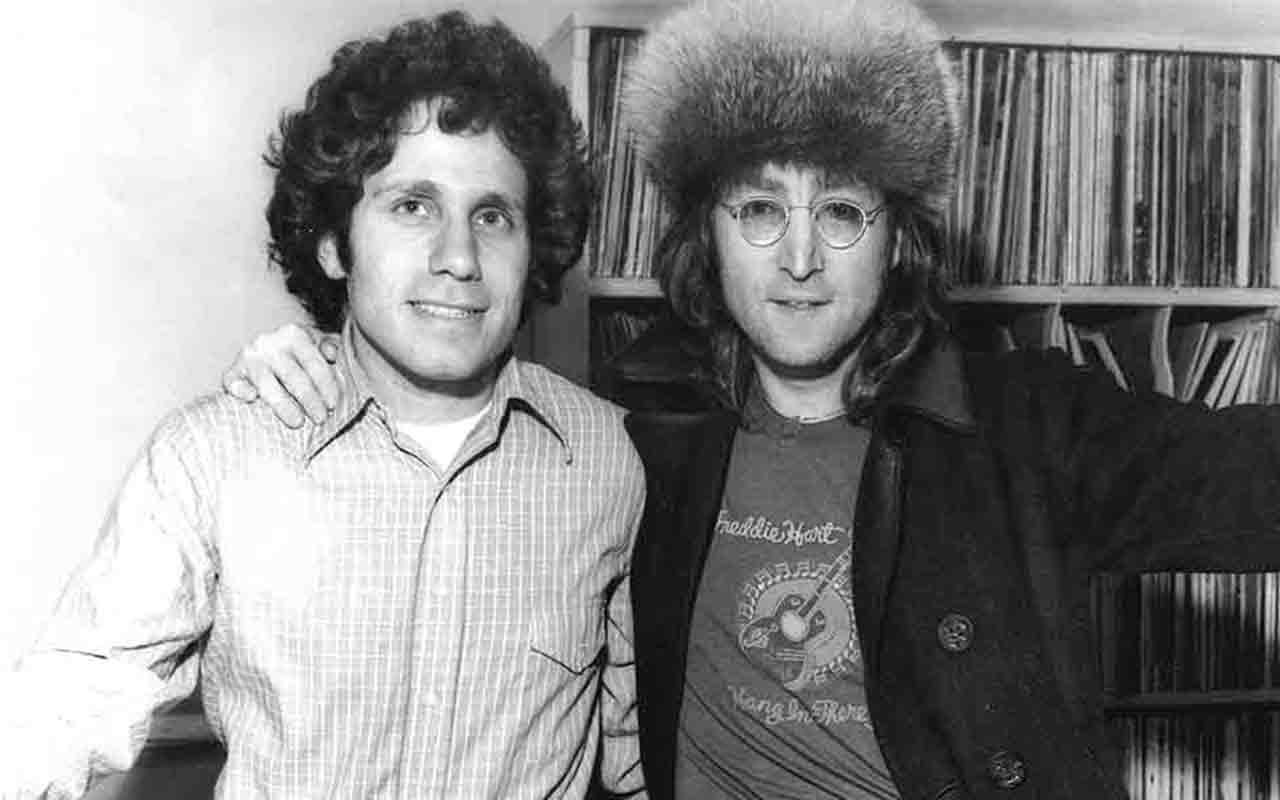
The John Lennon Interview
Without question my most memorable interview and on-air experience to date was on September 28, 1974, a Saturday afternoon I spent with John Lennon.
I had met him just a few weeks before at the Record Plant recording studio and casually asked him if he’d like to come up to the station to talk about his forthcoming album Walls and Bridges. I doubted anything would come of it, since none of the Beatles had ever visited our station before. When he showed up eager to talk, bringing with him some obscure 45’s he wanted to share with the audience, I didn’t know what to expect.
What began as an opportunity to promote the new album, turned into two hours of rare Beatle stories, insights into his immigration struggles, and John as the DJ, introducing and commenting on all the music, commercials and weather. Highlights from the interview can be heard in The Beatles Anthology, Eight Days a Week – The Touring Years, John Lennon’s Jukebox, and are featured prominently in the award winning PBS American Masters film, LENNONYC. The complete show is part of the permanent collection of the Paley Center For Media (formerly the Museum of Television and Radio) and the full interview transcript appears in the book Lennon on Lennon. The transcript and audio are now on John’s official website. The complete interview is presented here in ten chapters with my commentary on each of them. Here’s part one:
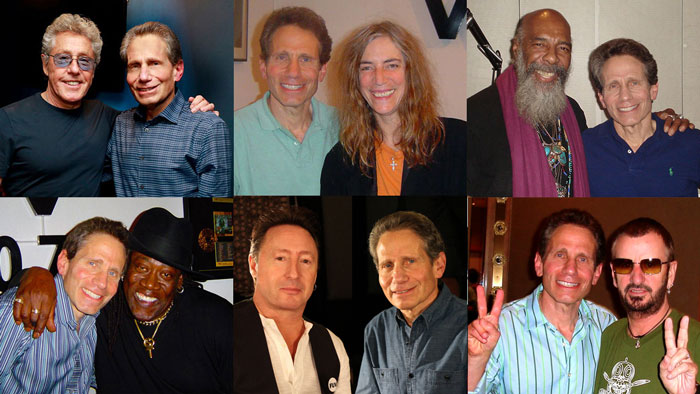
Celebrating 20 years at WFUV
I’ve been so fortunate to meet so many new artists and listeners over the past 20 years here at WFUV, and reconnect with so many more from my days working at WNEW-FM.
In July 2020 I shared some of my favorite conversations and performances from a wide variety of these performers, including Graham Nash, David Crosby, Ringo Starr, Elvis Costello, Patti Smith, Julian Lennon, Clarence Clemons, Richie Havens, Gary Clark Jr., Judy Collins, Crowded House, Indigo Girls, Ben Folds, Bill Wyman, Dion, Gregg Allman, Phoebe Snow, Robert Plant, The Lone Bellow, Roger Daltrey and Ronnie Spector. You can listen to the full broadcast below.
A big thank you to all the music fans who’ve been on this journey with me!
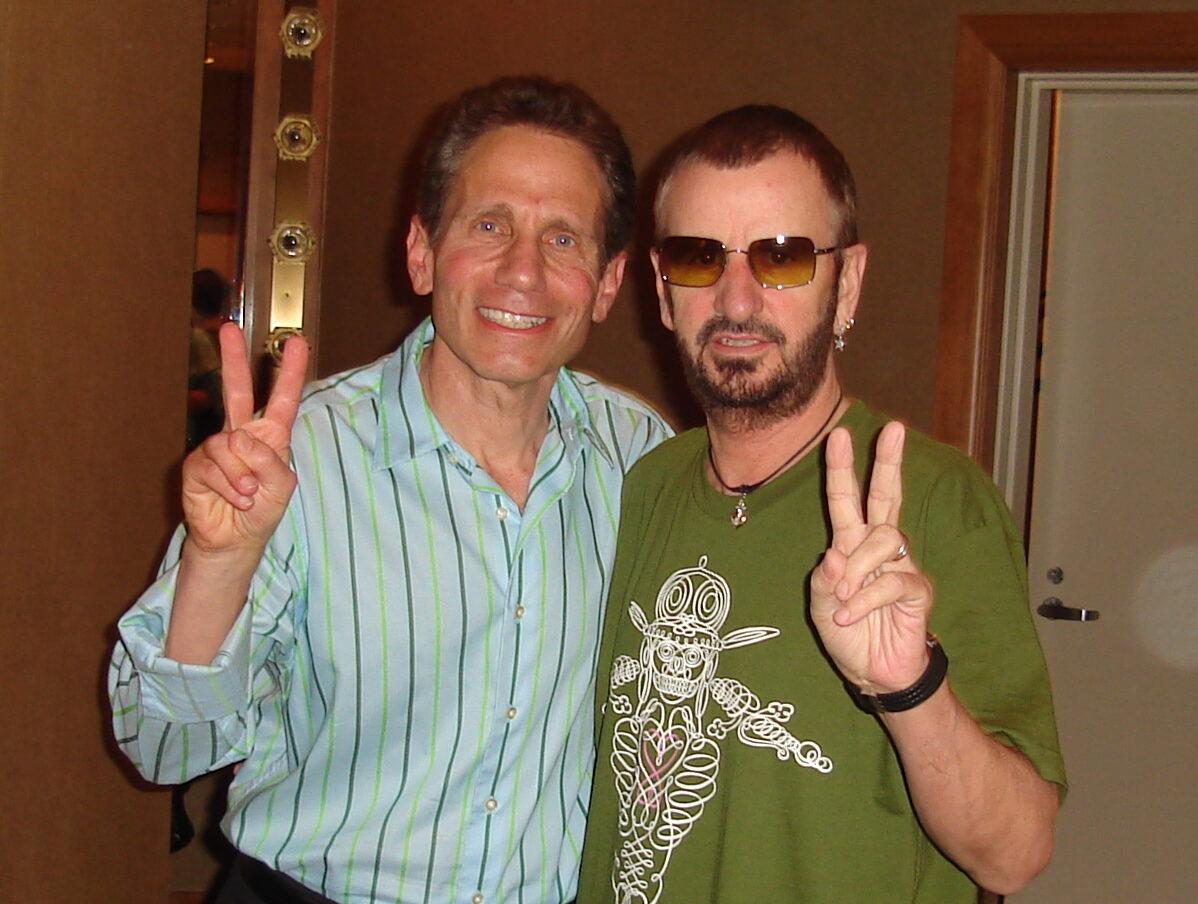
Ringo Starr
Ringo Starr released his 20th solo studio album What’s My Name in October 2019 following a very successful 30th anniversary tour with his band The All Starrs. In October the Beatles classic album Abbey Road was reissued with a brand new 2019 mix crafted by Giles Martin, son of original Beatles producer George Martin.
The new package also contained bonus material of previously unreleased alternate session takes. I’ve spoken with Ringo several times over the years and it was great to talk with him again just recently to get his perspective on all of it, including his cover of John Lennon’s “Grow Old with Me” featuring Paul McCartney on bass.
In March 2021 Ringo released a 5 song EP called Zoom and we spoke again . Listen here.
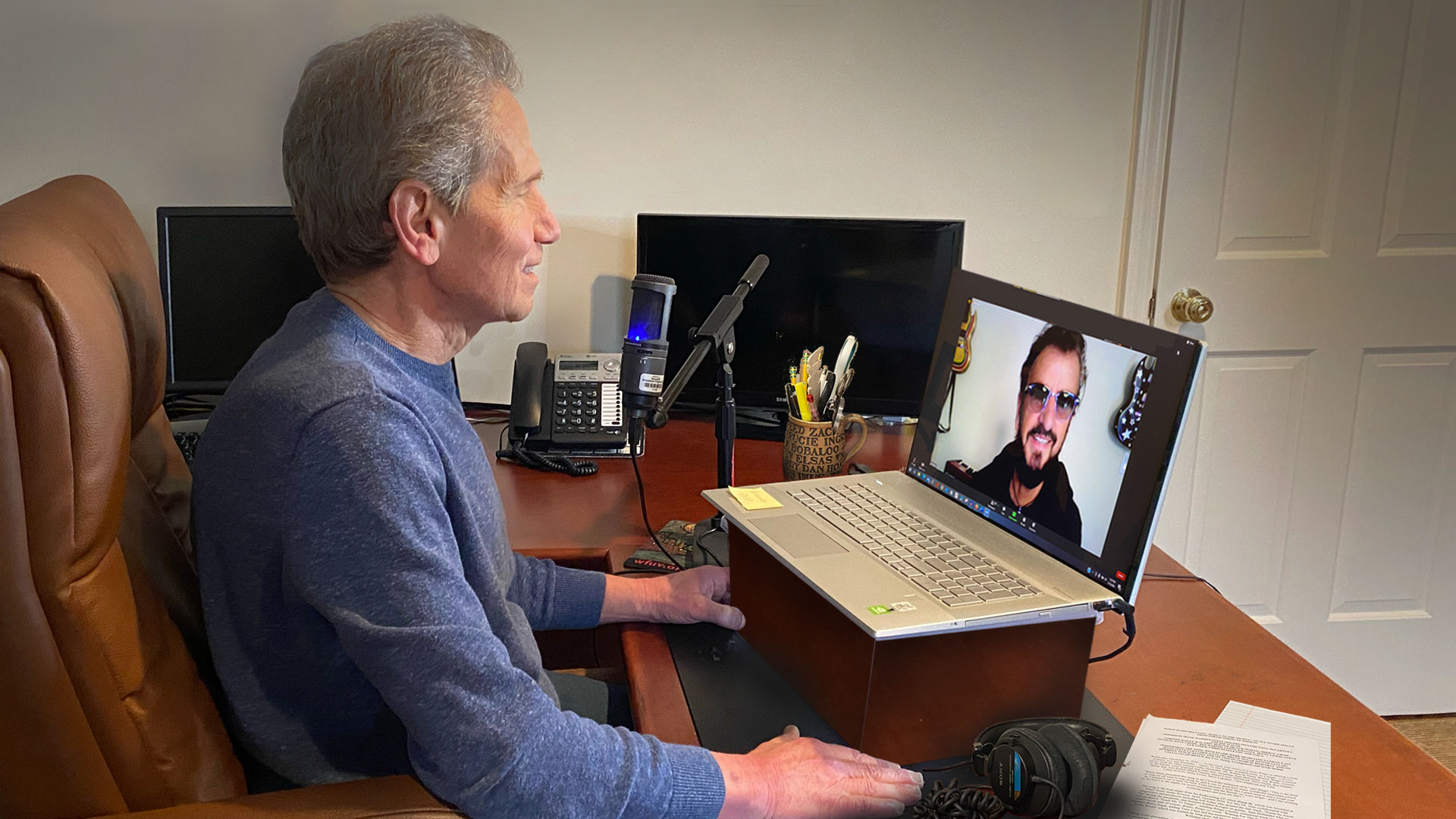
Ringo Starr – Zoom In
It’s always a special treat to talk with Ringo and it was great to catch up with him again in March 2021. Due to the Covid pandemic, in person meetings are not possible now, so Ringo and I used the perfect technology to talk about his new EP, “Zoom In” and his latest photo book, “Ringo Rocks” celebrating thirty years with The All Starrs. He continues to be incredibly positive, happy to be making new music and devoted to preaching the spirit and actions of “Peace and Love.”
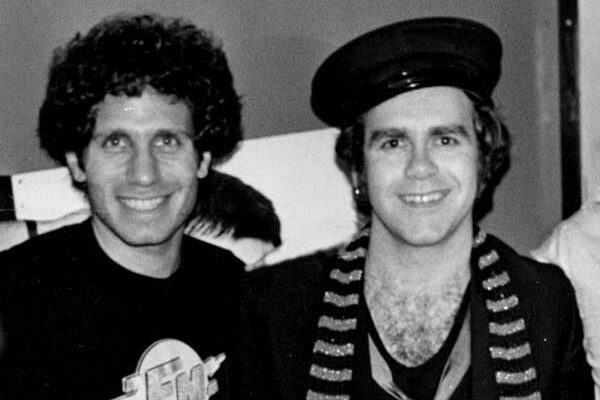
Elton John
Elton John was a frequent and welcome guest at WNEW-FM in the 1970’s. One of his most historic visits happened November 29, 1974, the day after Thanksgiving, when he stopped by to co-host my show. The night before he had performed at Madison Square Garden and welcomed a “surprise” guest on-stage. Though no one could have imagined it at the time, it would turn out to be John Lennon’s final concert performance and we discussed how it happened.
Jerry Garcia – The Grateful Dead
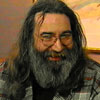
When I met up with Jerry Garcia for a PM Magazine TV interview in a NY hotel room in late Fall 1984, the Grateful Dead were about to celebrate their 20th anniversary. The band had already begun to attract a second generation of Deadheads — extremely loyal fans who may have been too young to experience the 60’s firsthand, but were determined to embrace the experience in every way possible.
Jerry was in town to play a show with John Kahn at the nearby Capitol Theatre in Passaic, NJ. It was just one of several side projects he would often pursue. Relaxed and happy, it was surprising and sad when just a few months later he entered a difficult period that lasted nearly two years plagued by drug and health issues. Happily he and the band recovered to record 1987’s In the Dark, the album that would provide them with their first (and only) Top 10 single “Touch of Grey” (and the introduction of Cherry Garcia ice cream). “The long strange trip” would continue for almost eight more years until his untimely death in August 1995.
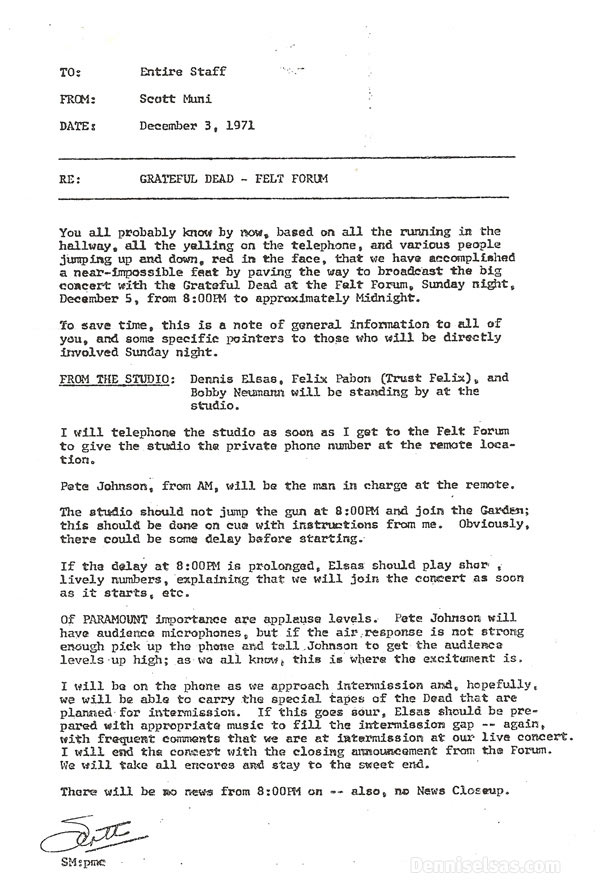
My first Dead working experience (not just as a listener) was as part of a historic broadcast on December 5, 1971, from New York’s Felt Forum a mid-sized theatre within Madison Square Garden. As was often the case that year, The New Riders of the Purple Sage were the opening act for the Grateful Dead. A Bill Graham production, it was the first live radio broadcast of the Dead in New York City and one of their earliest ever. We had the broadcast at 102.7 WNEW-FM and as the new kid on the staff, I was back at the studio to handle the station ID’s and be ready in case anything went wrong. In his role as Program Director, the legendary Scott Muni outlines the evening’s events as they are expected to unfold in this wonderful memo.
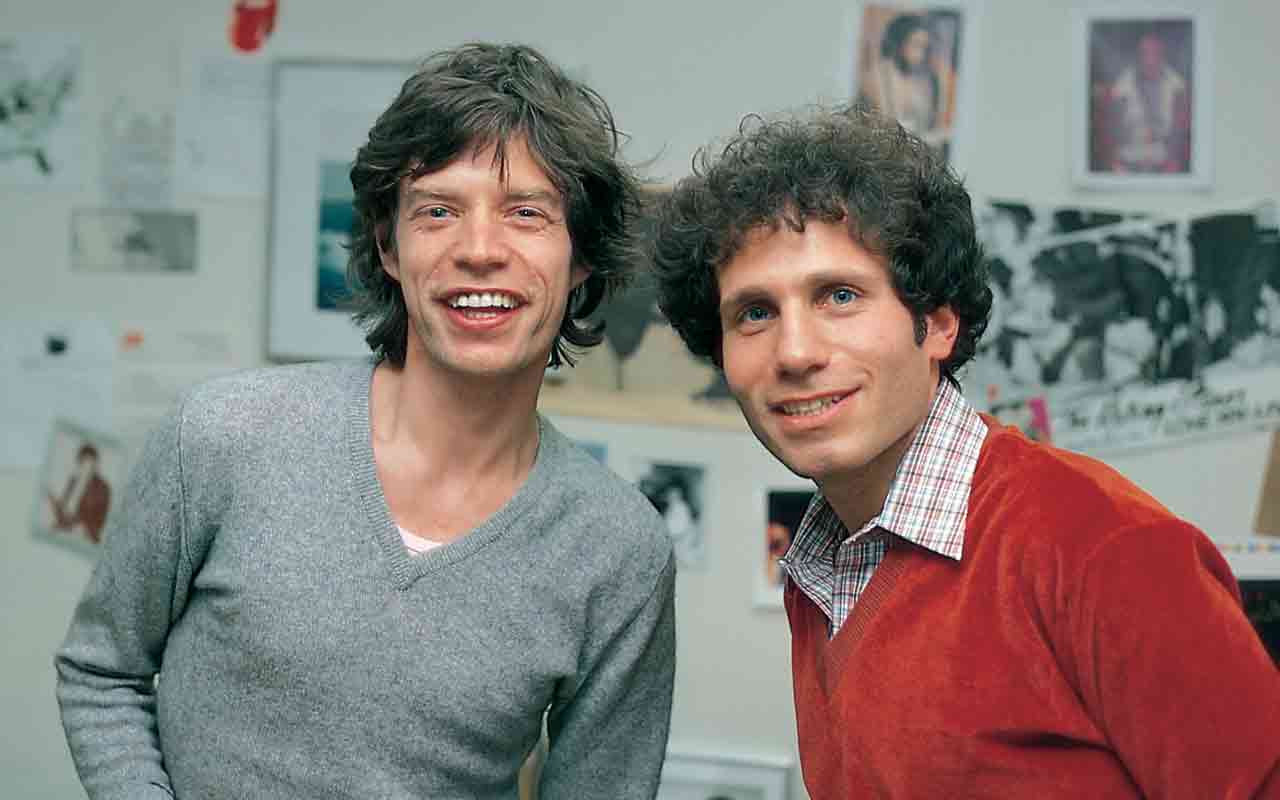
Mick Jagger and The Rolling Stones
The Rolling Stones formed Rolling Stone Records in 1970 after leaving their original label Decca (London Records in the US.) They negotiated a deal with Atlantic Records to distribute the label and in 1978 they put-out only the second non-Stones related album Bush Doctor from Jamaican reggae artist Peter Tosh.
Atlantic asked me to write, produce, and voice a radio commercial to promote the album. I was happy to write and produce the spot, but suggested we might try having an additional announcer. “Why not ask Mick Jagger” I said half-jokingly. “After all it’s his record label.” To my total surprise and delight Mick agreed to it and what you’ll hear is some of what happened in the label’s mid-town Manhattan office as I attempted to coach Mick through the process.
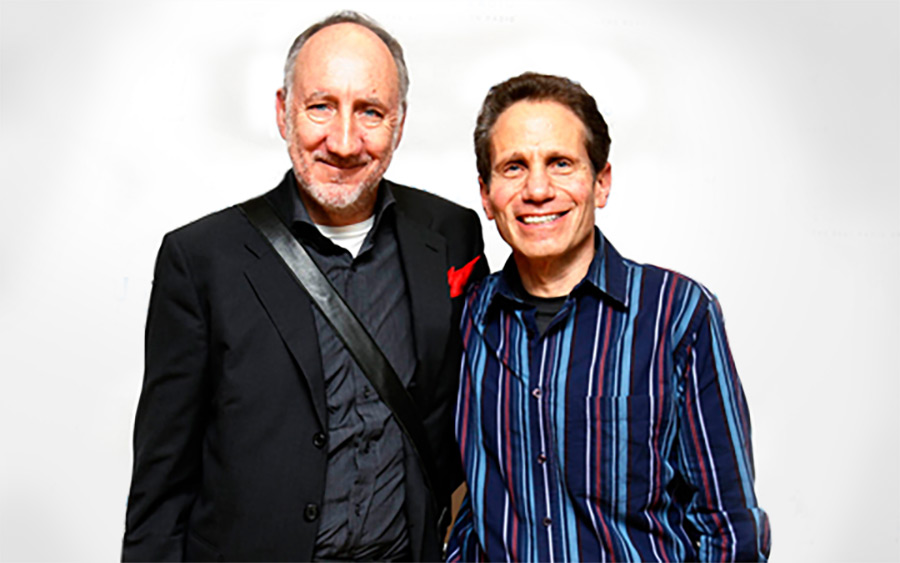
The Who – Pete Townshend
Meeting Pete Townshend in the 1970’s, I was pleasantly surprised when he told me he often listened to my nighttime show. I wondered how that was possible, as he was living in England at the time. Pete explained that he had tapes of WNEW-FM sent to him regularly and that he often listened to my show while driving his daughter to school.
Being a huge Who fan, that was a great image to enjoy.
We’ve met up again several times since then and it was on his June 16, 1993 visit to promote his solo project Psychoderelict that he recalled his first NY appearance and the secret behind all those smashed guitars.
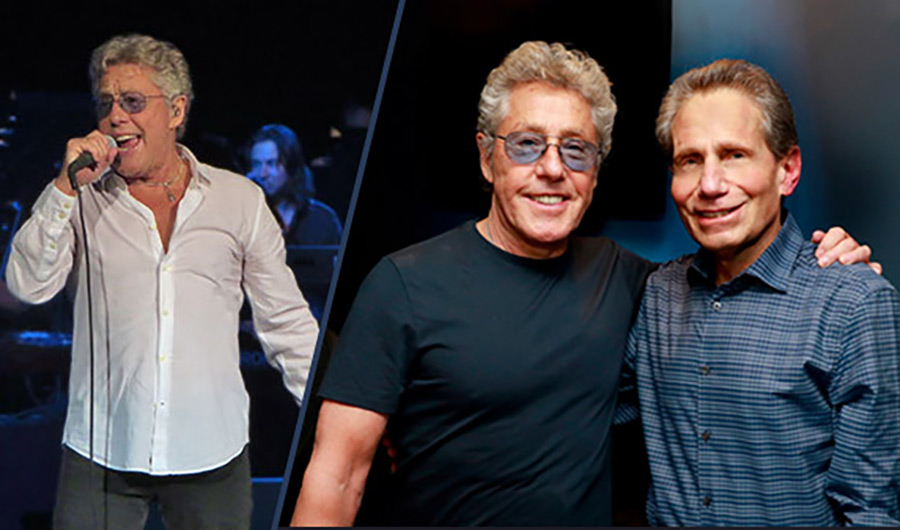
The Who – Roger Daltrey
Roger Daltrey was just 21 years old in 1965 when he sang “hope I die before I get old” on My Generation, one of the Who’s earliest signature songs. It didn’t take long for that lyric line to take on ironic significance as The Who continued to tour and record over the next five decades. Recently Roger released his autobiography Thanks a Lot Mr. Kibblewhite: My Story. It’s filled not only with all the wonderful rock ‘n roll and Who stories that you’d expect, but is also a very personal look back at Roger’s life. It’s his take on how the band was formed and grew and almost broke up more than once. We also get a close-up look at his life off the road away from the spotlight, and some of the personal challenges he faced. It was a delight to sit down with Roger in October 2018 to discuss his book and pick up where we left off twenty-three years ago.
The first time I spoke with Roger Daltrey was in 1985 for televsion’s PM Magazine while he was promoting his then newly released solo album Under a Raging Moon. It had been just three years since the Who had broken up (for the first time) and Roger was already reflecting back on “his generation” at the age of 42.
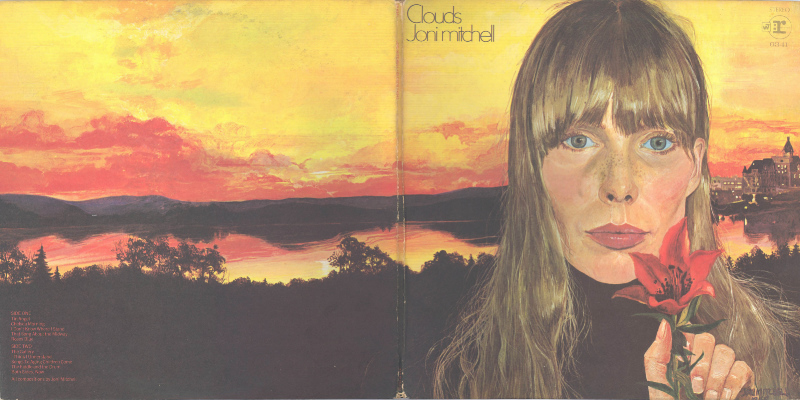
Joni Mitchell
For the generation that came of age during the emergence of the folk-rock singer-songwriters, Joni Mitchell has always been one of the most influential and admired performers. With legendary songs like “The Circle Game” and “Woodstock”, defining albums including Clouds, Blue, and Ladies of the Canyon, and genre breaking excursions into jazz and beyond, Joni has never stopped evolving as an artist.
We spoke in the fall of 1985 as she was promoting her latest album Dog Eat Dog. She was gracious and open and happily receptive to my questions regarding some earlier Joni classics including “Both Sides Now” and an obvious DJ favorite about the radio
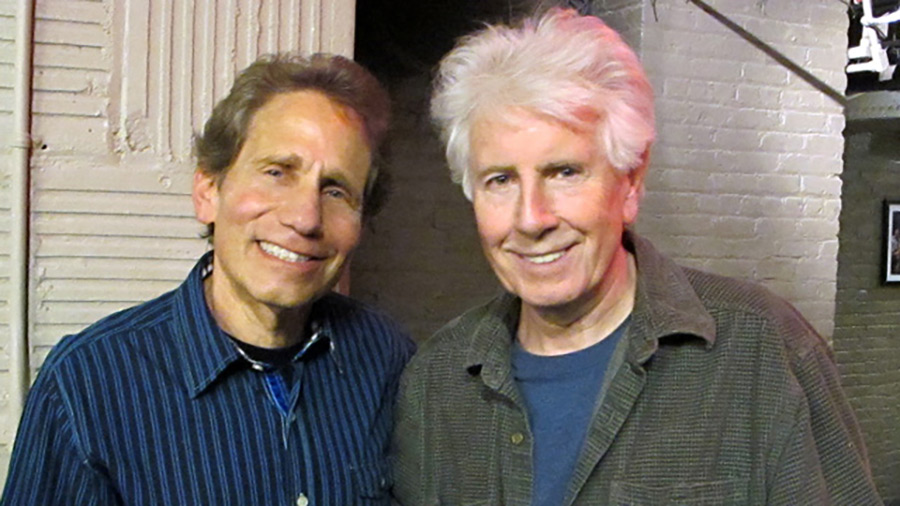
Graham Nash
I didn’t realize that I was listening to Graham Nash when I first heard his voice coming out of my AM radio as part of The Hollies.
It was the mid 1960’s and his group was yet another one of those hit-making English bands that was part of the British Invasion. Their songs, including “Bus Stop,” “Look Through Any Window,” and “On a Carousel” stood out with their soaring harmonies and crisp production. However, just a few years later in 1969, I would become very familiar with Graham’s name as he joined with David Crosby and Stephen Stills to create an amazing debut album – Crosby, Stills and Nash. Its unique sound from a magical blend of voices and a diverse collection of original songs helped to define the new FM radio sensibilty and the beginnings of a musical genre.
Graham and his mates were joined within a year by Neil Young and over the next forty years they would continue to perform, record, break-up, and re-unite as a quartet, trio, duo, or solo act. Embracing political activism and making social commentary became an important part of their musical statement, but their songs never lost their universal appeal and timeless quality. Though each of the group’s members created a separate and strong individual profile, a CSNY identity remained and it was Graham that made sure they never drifted too far apart.
I sat down with Graham Nash in the summer of 2014 just shortly after he had overseen the production and release of CSNY 1974 – a beautiful audio/visual collection capturing the band during one of their most memorable tours. He had also recently completed his fascinating autobiography “Wild Tales” chronicling his historic musical and personal journey. We covered a lot of ground and began our conversation with the opening of his book.
Click here to listen to the full interview.
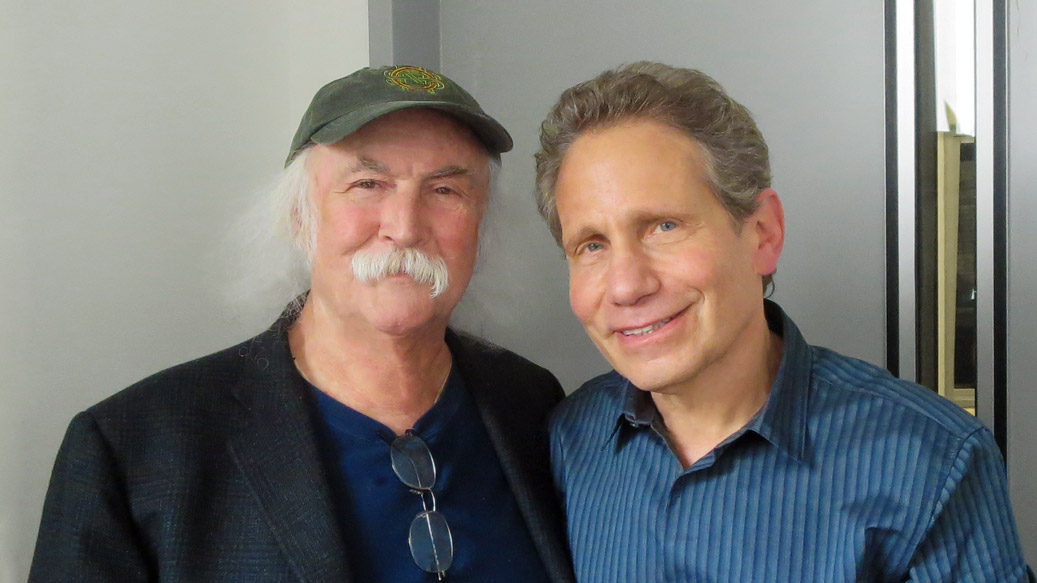
David Crosby
I sat down with David Crosby in early May 2015 during the final week of a spring tour with long-time band-mates Stephen Stills and Graham Nash. He was preparing to go out on a strictly solo tour: “no band” as he explained to me. It would be just him and his guitar without the “safety net” of CSN.
I had just seen Crosby Stills and Nash (CSN) a few nights earlier at a beautiful venue, the recently restored Kings Theatre in Brooklyn. The group was in top form, and the audience totally engaged. David was very enthusiastic about how it had all unfolded.
We had a great conversation touching on a myriad of subjects including the legacy of CSN and their fans, the recent controversy centered on David’s criticism of long time bandmate Neil Young’s girlfriend, his positive feelings about his time in The Byrds and his relationship with Roger McGuinn, and how pleased he was with his most recent solo album Croz. He was even quite open about giving up pot (at least for the time being) to meet the challenge of writing more new songs over the last few months as “the creative muse” was consistently paying him a visit.
Click here to listen to the full interview.
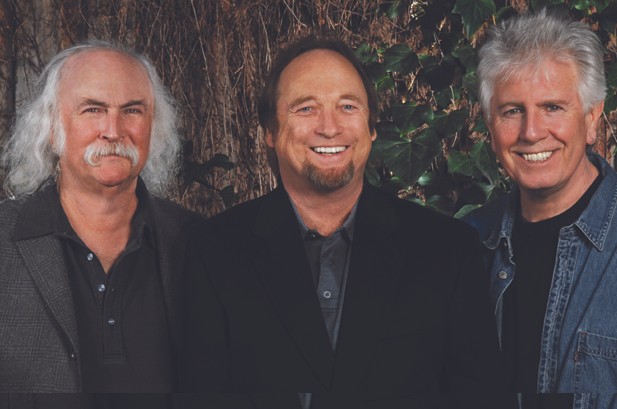
Crosby, Stills and Nash
These days it’s seems unlikely that we’ll ever see another CSN or CSNY reunion or album. Longtime friends David Crosby and Graham Nash haven’t spoken to each other since 2016 and Crosby and Neil Young had a falling out several years before that.
However back in 2009 CSN were talking about doing their first “covers” album with premiere producer Rick Rubin. I asked them about it on Oct 29th, 2009 backstage at the first night of the two-night 25th Anniversary Rock and Roll Hall of Fame Concert at Madison Square Garden.
They were planing on recording songs by everyone from Dylan to the Dead to the Stones. Click on the video below to see them tell me all the details.
In early January 2011 CSN announced they had parted ways with Rick Rubin (and Columbia Records) having grown impatient waiting for him to finish other projects and resume work with them. When I spoke with David Crosby in May 2015 he said it was still a possibility that they might release some of the songs they have since recorded, including a cover of Bob Dylan’s “Girl from the North Country”.
I wonder if we’ll hear any of those recordings.
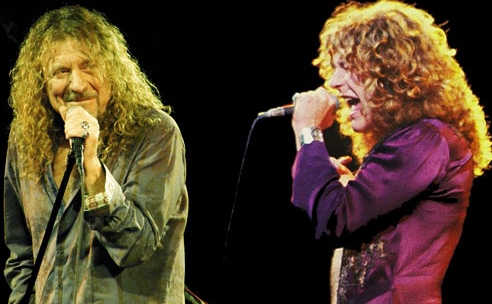
Robert Plant – Led Zeppelin
Robert Plant keeps moving forward with his musical choices, without abandoning or ignoring his glorious past. Since Led Zeppelin ended in December 1980 (following the death of their drummer John Bonham) Plant has recorded numerous solo albums, reunited with Zeppelin’s Jimmy Page for several projects, and ventured into Americana and world music. He successfully and surprisingly teamed up with bluegrass star Alison Krauss in 2007 and then joined Patty Griffin and Buddy Miller for Band of Joy in 2010 and took up residence in Austin, Texas.
In 2014 Robert decided it was time to return home – the West Midlands region of England. His latest album lullaby and… The Ceaseless Roar was recorded there with his current band The Sensational Space Shifters. I spoke with him from a studio in the English countryside not far from where he grew up and currently lives. We talked about the new album, his upcoming shows in the area, his love for soccer and why despite all the musical and personal changes, there’s still a part of his song that remains the same.
Click here to listen to the full interview.
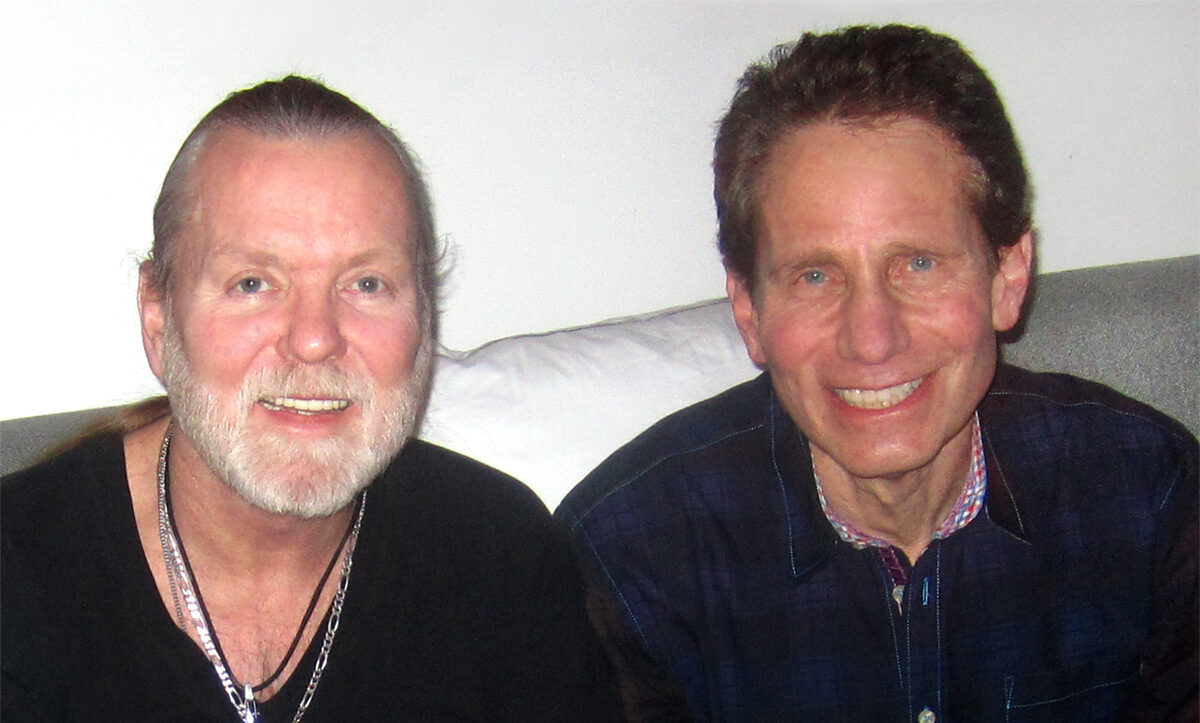
Gregg Allman
He’s always been an Allman Brother. Together with his older sibling Duane they evolved from the Allman Joys to The Hour Glass to the band that would define Southern Rock. Their signature sound blending rock, blues, country, jazz and jam was a staple of the early progressive FM airwaves and remains just as popular today. It hasn’t always been easy for the band to stay together, but forty plus years later they’re still performing sold-out shows to an ever-growing fan base.
In June 2010 it was a surprise to learn that Gregg had just undergone a successful liver transplant after suffering from Hepatitis C. He returned to limited performing in October and just a few months later released his first solo album in fourteen years Low Country Blues. It’s primarily a collection of covers originally done by his early blues heroes.
The album had been recorded with producer T Bone Burnett before his operation and we spoke about it in January 2011. Gregg told me how a radio station had turned him on to the blues when he was a kid and how he had selected the songs for this new collection. I couldn’t resist the opportunity to ask about those legendary Allman Brothers NYC shows captured on Live at Fillmore East and he shared a surprising secret about that classic album’s artwork.
Sadly Greg passed away on May 27, 2017 due to complications of liver cancer.
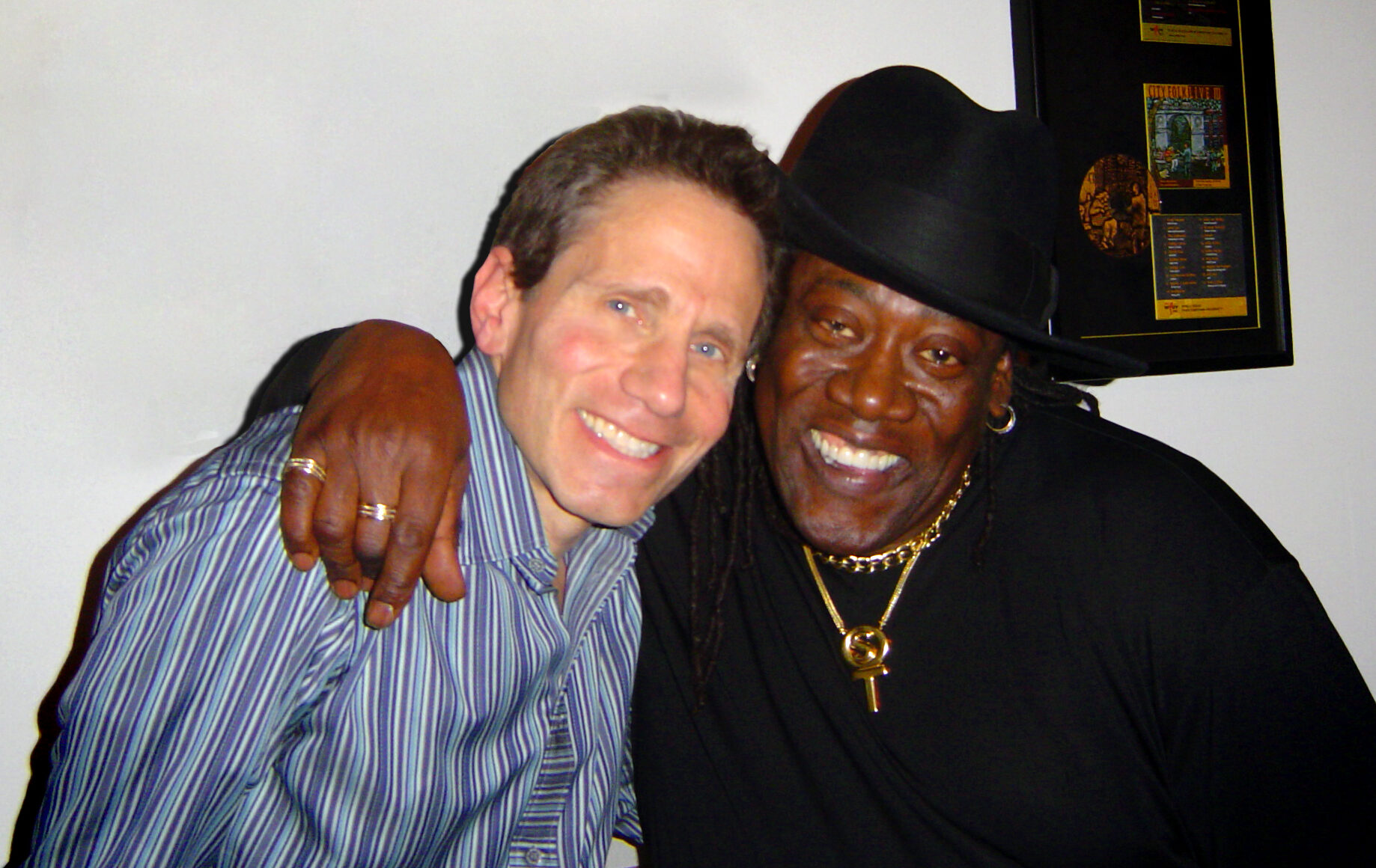
Clarence Clemons – The E Street Band
The first time I met Clarence Clemons was backstage at New York’s Bottom Line in August 1975 during his historic series of performances with Bruce Springsteen’s E Street Band.
In 1985 I did a TV profile about him for PM Magazine spotlighting his solo career. When we sat down again in Feb 2004 he was working on some solo projects, but still very much a pivotal member of Bruce’s band and firmly established as one of the defining saxophone players of rock n’ roll. We talked about all of these things and he shared the wonderful story of the night forever immortalized in “Tenth Avenue Freezout” when “the Big Man joined the band. “
Click here to listen to the full audio
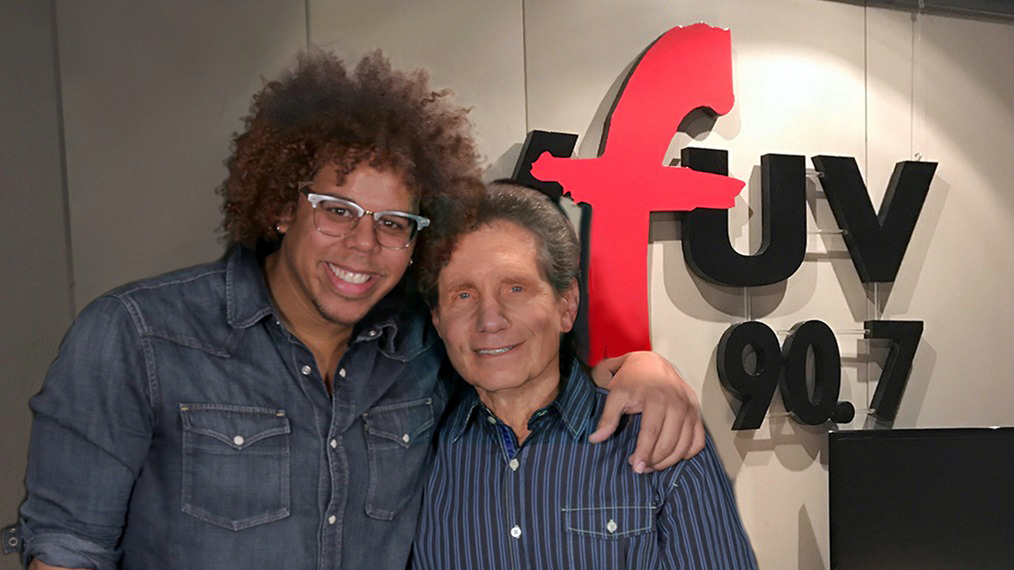
Jake Clemons – The E Street Band
If the name Jake Clemons is familiar to you, it might be as one of the newer members of Bruce Springsteen’s E Street Band. He’s also the nephew of Clarence Clemons, the legendary and charismatic saxophone player for Bruce’s band.
When Clarence passed away in June 2011, it was not only a great loss for fans, friends and family, but a major challenge to somehow try and fill his role in the group. Jake was already an established musician pursuing his own career, but when Bruce called him in for an audition he knew he had to go. It didn’t start off well, but ultimately he “passed the audition” and made his debut with the E Street Band at the Apollo theatre in Harlem.
Jake shared the complete story with me when he visited WFUV to promote his own new album Fear and Love.
Click here to listen to the full interview.
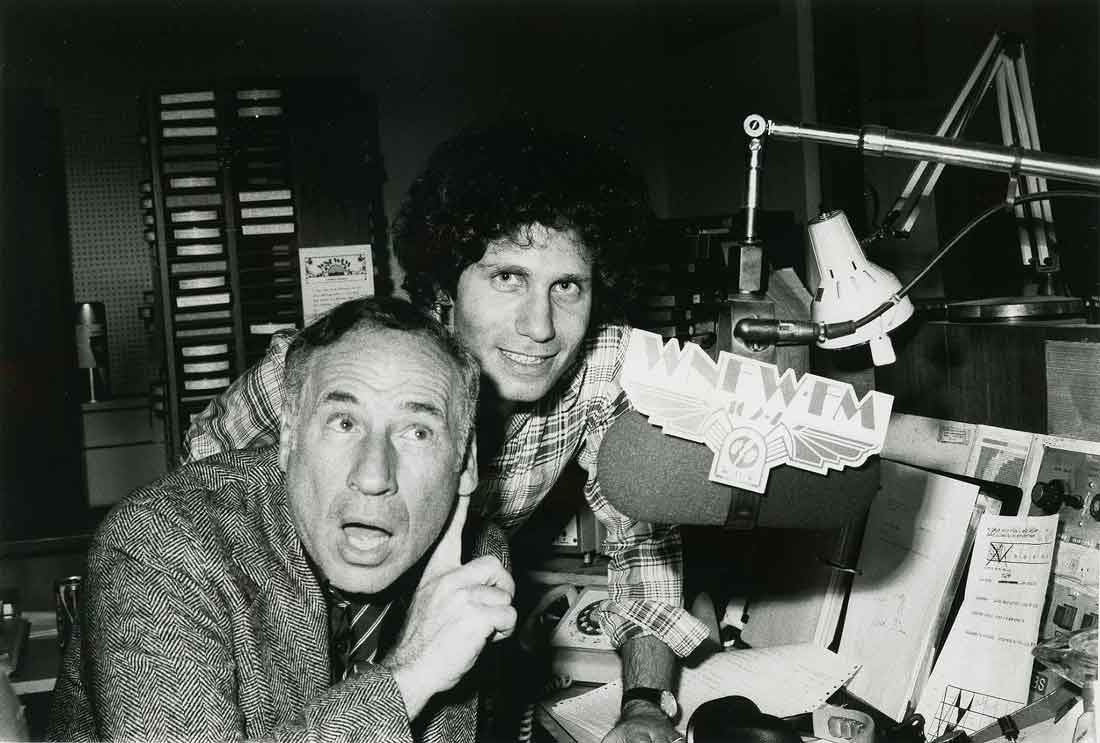
Mel Brooks
Mel Brooks is truly an original, a one of a kind, and one of the few entertainers to win an Oscar, a Tony, an Emmy and a Grammy. I had the opportunity to talk with him at length on March 27, 1978. He was promoting an album that featured both the soundtrack to his latest film High Anxiety and musical highlights from his earlier movies billed as his “Greatest Hits.”
What a night – spending the evening as the straight man with the original “Two Thousand Year Old Man”, creator of Get Smart and the director/writer of Young Frankenstein, Blazing Saddles and so many more. Of course we talked about The Producers and it’s interesting to hear what he thought the future of it might be, more than two decades before it became one of the most successful Broadway shows ever. As the interview began, it was obvious he had gotten some background information on me that still makes me (and my Mom) smile.
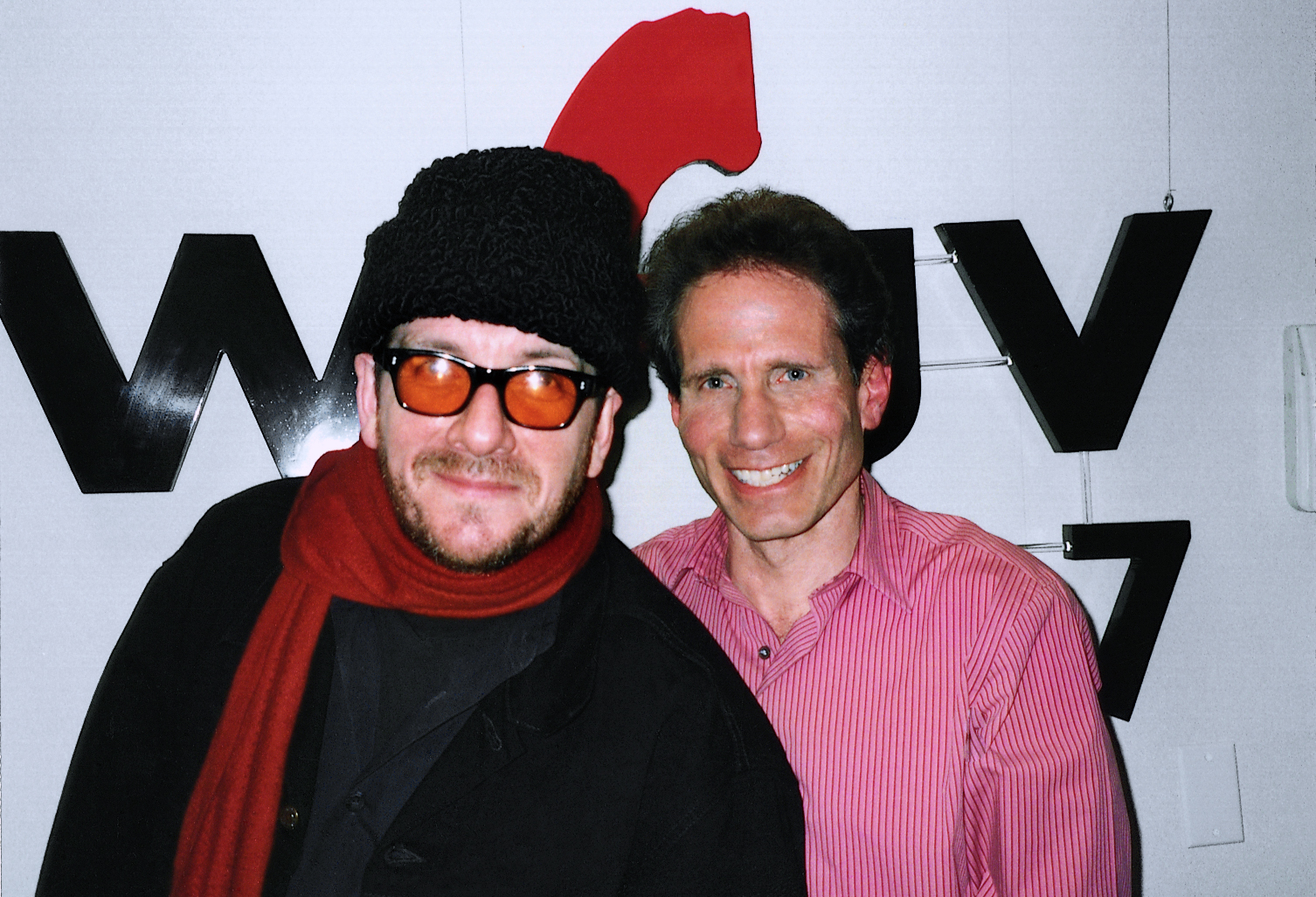
Elvis Costello
When Elvis Costello visited with me at WFUV in April 2002, it was the day before the official release of his then latest album When I Was Cruel. It was already the nineteenth album of his career that began in the mid 1970’s; and in the years since he’s released six more.
In addition to his own work, he’s also participated in numerous other collaborative efforts and was commissioned to compose an opera and a ballet. He’s hosted a critically acclaimed television music interview show “Spectacle” and continued to tour extensively. His 2015 memoir Unfaithful Music & Disappearing Ink offers almost seven hundred pages discussing many of these subjects, and is a thoughtful perspective on his career. In this interview we talked about his return to an earlier “sound,” while still moving ever forward in exploring different stylistic approaches. He was charming and witty and related how appearing in a brief cameo in “Austin Powers: The Spy Who Shagged Me” provided a new opportunity to attract fans.
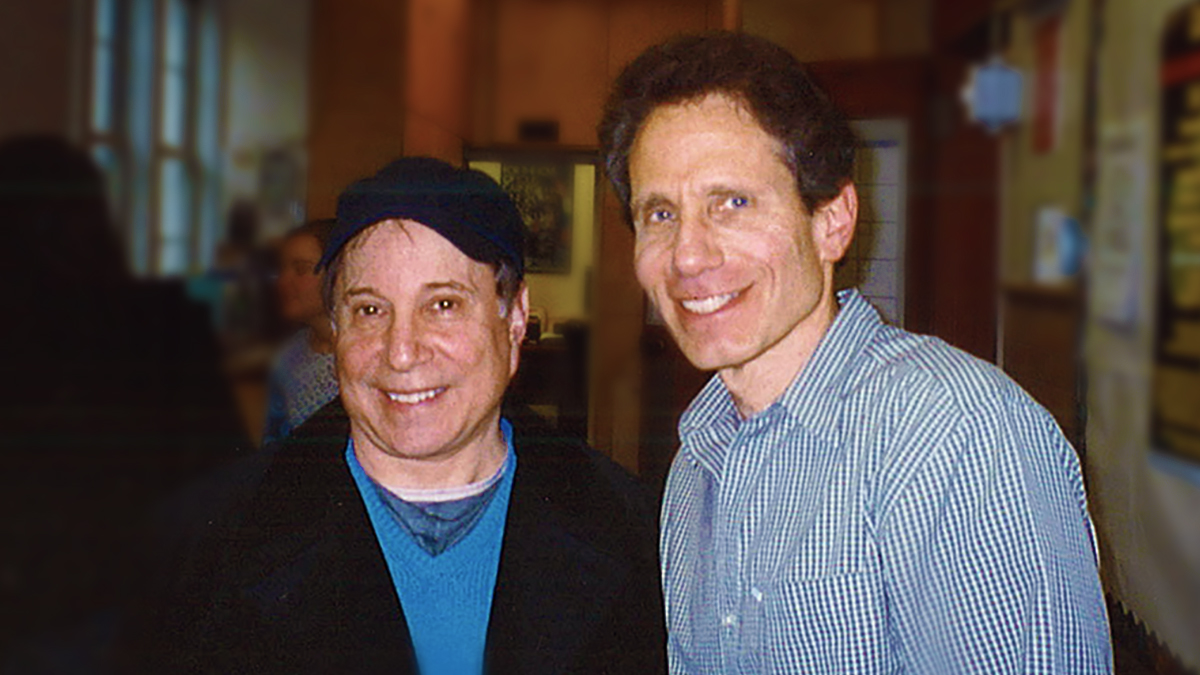
Paul Simon
As a student at Queens College in the mid 1960’s, I started to hear rumors that one half of a new folk rock duo that was getting airplay, was a recent graduate of our school. The alum was Paul Simon who along with his partner, Art Garfunkel, had grown up in nearby Forest Hills and would soon become known worldwide. By the time they split up in the early 70’s, I was on-the-air at WNEW-FM and introducing their solo projects to my listeners. Paul especially was trying out new musical genres and he was my in-studio guest on September 8, 1986 to discuss his latest project, the groundbreaking album Graceland.
Seventeen years (and one day) later on September 9, 2003, Simon and Garfunkel announced their long awaited reunion. It was called the Old Friends tour, based on a song title that was part of their classic Bookends album. I arranged for a live radio broadcast of the event over WFUV live from The Bottom Line club and here are highlights from that press conference and performance.
Click here to listen to the full audio.
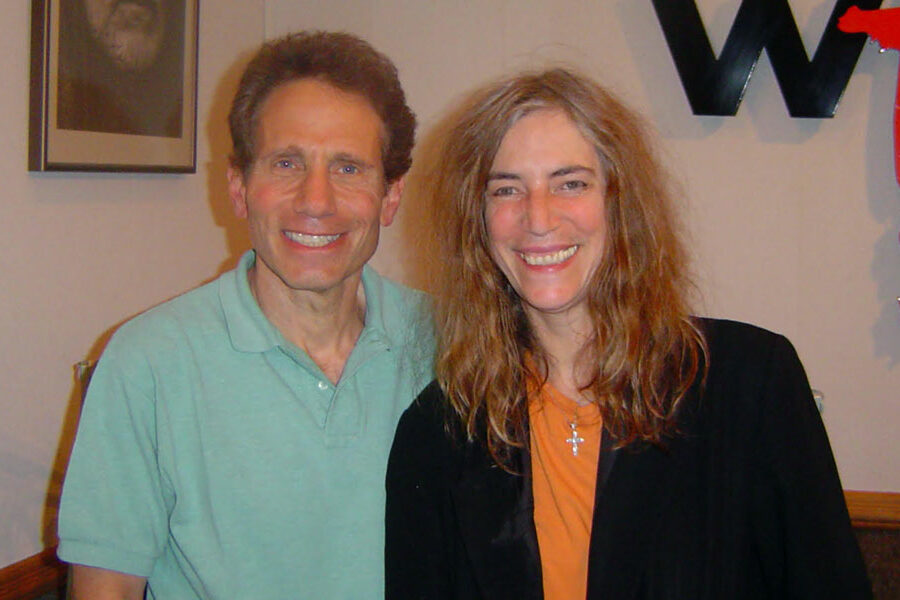
Patti Smith
The first time I ever heard a Patti Smith record I didn’t know what to make of it. It was her cover of Van Morrison’s “Gloria”, a favorite AM hit of mine from the mid-60’s by the Chicago band The Shadows of Knight. Patti’s version was not just different, it was startling – mixing spoken word, religious references and her distinctive voice with a rock‘n’roll backbeat. When Arista Records released her debut album Horses in 1975 they asked me to provide the voice-over for the radio commercial that was aimed at letting the audience know just what this new artist was all about.. Almost 20 years later I got to ask Patti to explain it all to me when she came to WFUV for a live performance with her band to promote her then new album Trampin’. Here’s the original commercial from 1975 followed by highlights from my interview and her performance in 2004.
Click here to listen to the full interview.
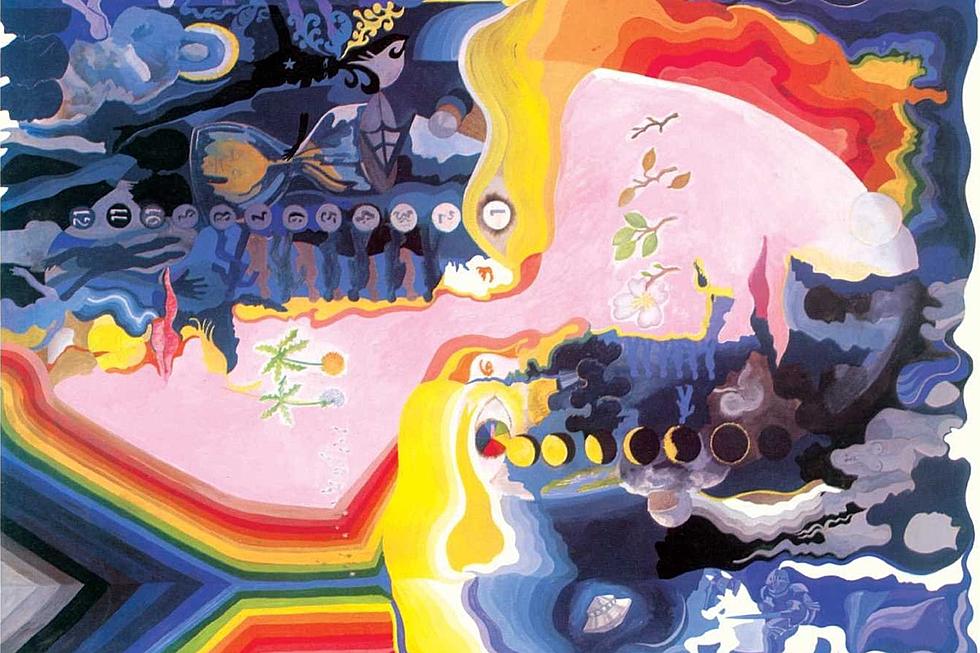
Justin Hayward – The Moody Blues
The Moody Blues began in 1964 as a rhythm and blues based band from Birmingham, England . Within the year their single “Go Now” was a big hit on both sides of the Atlantic. Despite their early success, lead singer Denny Laine quit in 1966 and the band reformed with Justin Hayward and John Lodge as the newest members.
The first time I met Justin Hayward and John Lodge was backstage at Carnegie Hall in March 1975. They were taking a break from the Moody Blues and introducing their new Blue Jays album in a special listening party event promoted by WNEW-FM. Sixteen years later (December 1991) we were backstage at the Theater at Madison Square Garden as the reunited Moodys were preparing to headline the annual WNEW-FM Christmas concert.
When I spoke with Justin in November 1996 for Classic FM, he recalled how the group’s distinctive sound emerged from a record label’s desire to test a new recording technology for classical music. The result was the landmark album Days of Future Passed and the enduring composition “Nights in White Satin.”
Seven consecutive hit albums from 1967-1972 together with their 1980’s MTV introduction to a new generation firmly established them as rock royalty. Justin, John and original group member Graeme Edge continue to tour consistently to a loyal, large, and enthusiastic audience.
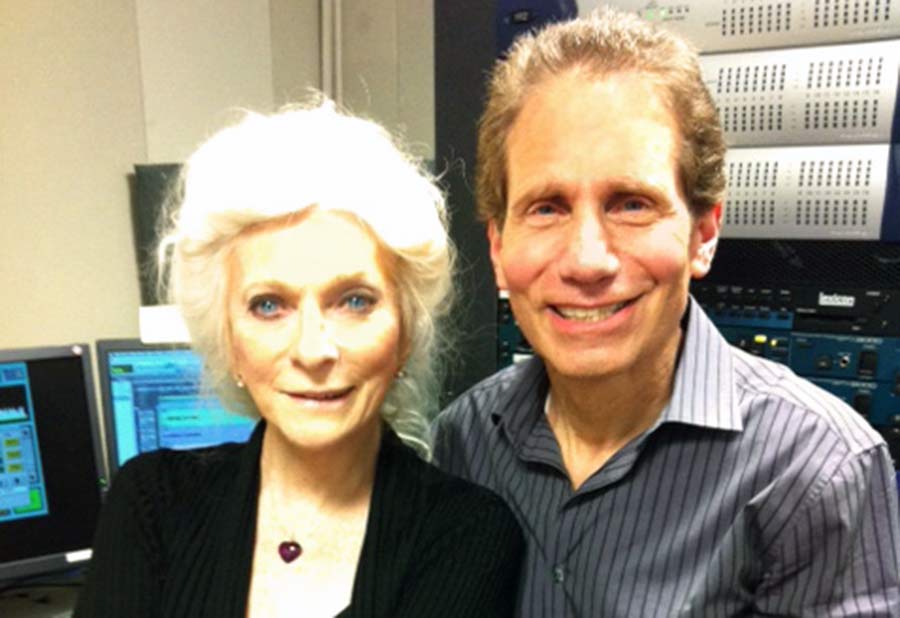
Judy Collins
There really was a Sweet (Suite) Judy Blue Eyes and she’s got plenty of her own stories to tell. Judy Collins emerged from the early 60’s folk scene and with the release of her 1967 album Wildflowers soon became one of the most prominent artists of the era. In addition to writing her own memorable songs her distinctive interpretations of Leonard Cohen and Joni Mitchell’s compositions greatly helped in introducing their music to a wider audience. She continues to tour and record and will be celebrating her career in an upcoming PBS special. Her recent autobiography is actually called Sweet Judy Blue Eyes – My Life in Music and so I took the opportunity to find out just why Stephen Stills wrote that song for her.
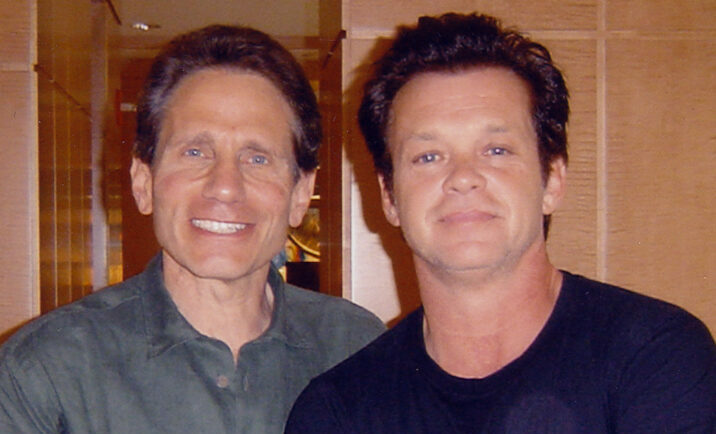
John Mellencamp
“I Need a Lover” by John Cougar (not Mellencamp at the time) was one of my favorite records of 1979. I became friendly with John, introduced him to NY on-stage at the Bottom Line and our relationship grew throughout the years. Combining commercial success with social activism (and helping to establish Farm Aid), John’s never been shy to speak his mind on a variety of subjects. When we sat down to discuss his 2003 album Trouble No More, he offered some surprising insights into how he viewed his own celebrity and we shared a mutual passion for an old 45 RPM single.
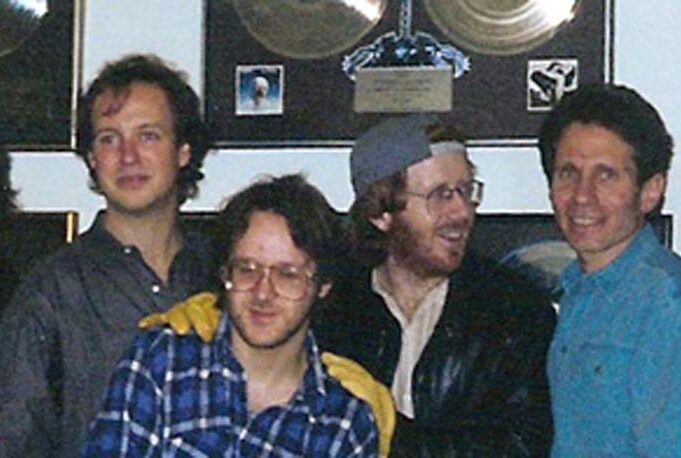
Vintage Fresh Phish 1994
Formed at the University of Vermont in 1983 Phish emerged by the 1990’s as the most popular of a new generation of Jam Bands. Often compared to the Grateful Dead for their improvisational concert style and a fervent fan base that followed them across the country, they mixed rock, folk, jazz and funk into a sound that was ever-changing until their 2004 break-up. Five years later they’ve reunited for a triumphant reunion tour and a brand new album Joy.
Their album Hoist had just been released when they visited me on April 13, 1994 for a lunchtime in-studio mini-concert and interview. Trey Anastasio, Page McConnell, Mike Gordon and Jon Fishman were in good spirits as they prepared for their first ever show at New York’s Beacon Theatre that night. Trey (who does most of the talking) explores the band’s history, his recently broken foot, the possibility of a Snapple commercial and more in this memorable clip.
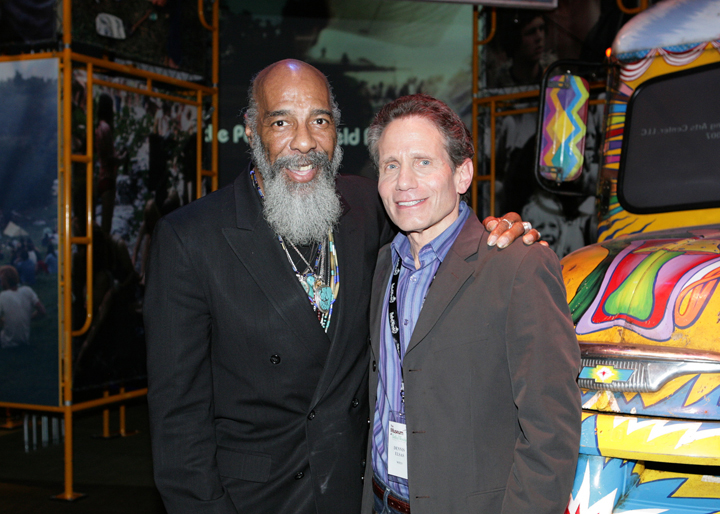
Richie Havens
The first time I ever met Richie Havens was in May 1968. I was working at my campus station WQMC (Queens College) and he was a rising folk-star and a staple of the newly blossoming FM airwaves. We talked at his manager’s office on East 55th Street and it was the first artist interview I ever did for the radio. It would be over a year later in August 1969 that a much larger audience would be introduced to him and experience his musical power as he electrified the opening of the Woodstock Music and Arts Festival.
We met and spoke many times through the years after that both on and off the air.
In May 2008 (40 years after that initial interview) I was hosting an event for the opening of the Museum at Bethel Woods (on the site of the Woodstock Festival). It was the perfect opportunity to ask Richie just how he happened to become the opening act of the Festival.
Just a few months later we were together again. This time it was in Studio A at WFUV, as Richie was promoting his newly released album Nobody Left to Crown, telling stories, performing live and making everyone that met him that day feel just a little bit better. His recent passing, on April 22, 2013, has left a great void not only in the musical world but also among his many fans and friends who experienced his positive and spiritual energy.
Listen to that complete show here.
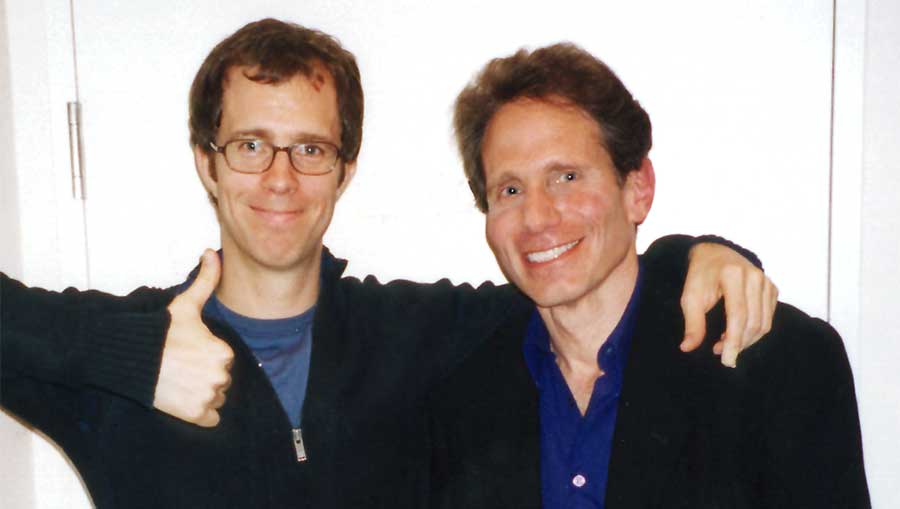
Ben Folds
The first time I met Ben Folds in Dec 2001 he was just starting out on a brand new chapter of his career. His three piece band Ben Folds Five had achieved significant critical and commercial success from 1995-2000 but now he was going to try it as a solo performer. He had come to WFUV to promote his newly released album Rockin’ the Suburbs. Just the night before he had performed to an enthusiastic sold-out crowd at New York’s Bowery Ballroom for the first time in a long time without a band. “Since maybe I was twelve” he joked with me.
The interview went well and it would be the first of several sessions that I had with Ben on-the-air including a great broadcast from the The Museum of Television and Radio. I wound up introducing him live at venues ranging from Roseland to Radio City Music Hall and appearing as the opening announcer for his Ben Folds Live album.
The last ten plus years have been busy and eventful for Ben. There have been a series of solo albums, tours, assorted musical projects, a few marriages, and a very successful stint as a judge for the NBC TV a-capella competition show The Sing Off. Recently he reunited with the original members of Ben Folds Five to record a brand new album and this summer they will be be out for a full nationwide tour.
I really enjoyed this first meeting and Ben and his piano sounded terrific in live performances of both old and (at the time) new songs. We explored his musical influences ranging from Little Richard to Elton John, the challenges of being a new father, and I tried to be diplomatic in finding out just why the original band had broken up.
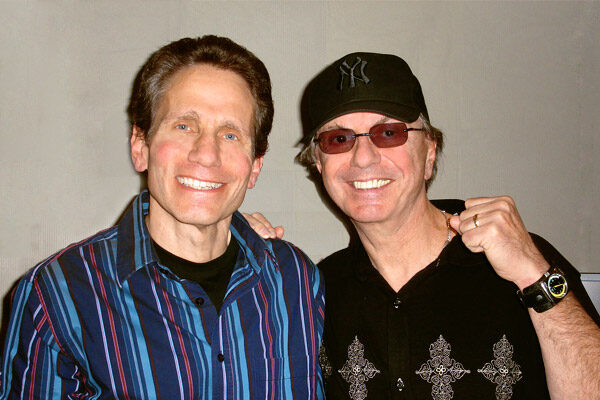
Dion
Dion is a rock ‘n’ roll original. Born Dion Francis DiMucci and raised in the Bronx, NY he initially achieved fame with the distinctive doo-wop sound of the Belmonts in the late 1950’s. Dion’s career rose to a higher level after going solo in 1960 with hits like “Ruby Baby,” “Runaround Sue,” and “The Wanderer.” Like many American rock singers his star faded a bit in the mid-60’s, but resurged in 1968 with the success of the very timely “Abraham, Martin and John.”
I would have been excited to talk with Dion in almost any location, but to have him and his guitar sitting across from me in WFUV’s Studio A (in January 2006) just a few blocks away from the Little Italy section of the Bronx where he had grown up, was truly magical. We talked about the neighborhood, his early love for Hank Williams, country music, and the influence of the blues and how that all came together in the release of his then latest album Bronx In Blue. What was even more fun for me were his stories of how some other musical threads and sounds had influenced some of my favorite “oldies but goodies.” Take a listen.
Click here to listen to the full audio.

Donovan
Donovan Phillips Leitch was born in Scotland in 1946 and moved with his family to the outskirts of London when he was ten. With Scotish and English folk music as his early influences, he dropped out of art school to pursue life on the road as a musician. His early success with the acoustic based songs “Catch the Wind”, “Colours” and “Universal Soldier” had some calling him the British Bob Dylan. Joan Baez and Pete Seeger introduced him to American audiences at the 1965 Newport Folk Festival.
Teaming up with successful pop producer Mickie Most, Donovan’s records took on a new sound and he had his first #1 hit with “Sunshine Superman” in 1966. It was the same year that he became the first well known British pop star to be busted for possession of marijuana. With the follow-up hit “Mellow Yellow” and it’s line “electrical banana is gonna be a sudden craze” fueling the myth that smoking dried banana skins could make you high, Donovan was labeled as a poster child for the hippie drug culture that had emerged. Though he would eventually move past that image, it did serve as part of the inspiration for one of his most memorable songs “Season of the Witch”. We talked about it when I interviewed him in July 2004 promoting his latest album Beat Café.
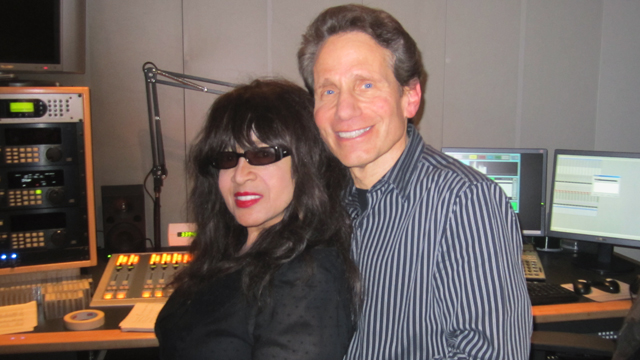
Ronnie Spector
She had that unmistakable voice and pioneered a rock ‘n’ roll style and look all her own.
Veronica Bennett burst onto the pop music scene in 1963 with one of the greatest pop records of all time, “Be My Baby.” As the lead singer of the Ronettes and a cornerstone of producer Phil Spector’s “Wall of Sound,” their music leaped out of your transistor radio with hits like “Baby I Love You” and “Walking in the Rain.” She married Phil in 1968 and officially took the name Ronnie Spector, but that union almost ended her career because of Phil’s strange and often violent behavior.
Eventually she got out of the marriage and slowly made her way back to performing and recording. The 1980’s found her working with Bruce Springsteen, “Little Steven” Van Zandt, Southside Johnny and many other industry admirers. Her hard work cumulated in 1986 with the Top 5 hit “Take Me Home Tonight” – a duet with Eddie Money- which re-introduced her to a loving audience. She recently created a multi-media show “Beyond the Beehive” to tell her own story in words and music and vintage memories.
When we talked in December 2010 she was just beginning to plan that new show and told me of her earliest influence, Frankie Lymon. I finally had the opportunity to tell her how much the Ronettes appearance in an early 1960’s Murray the K holiday concert had meant to me as part of the experience of attending my first live Rock ‘N’ Roll show.
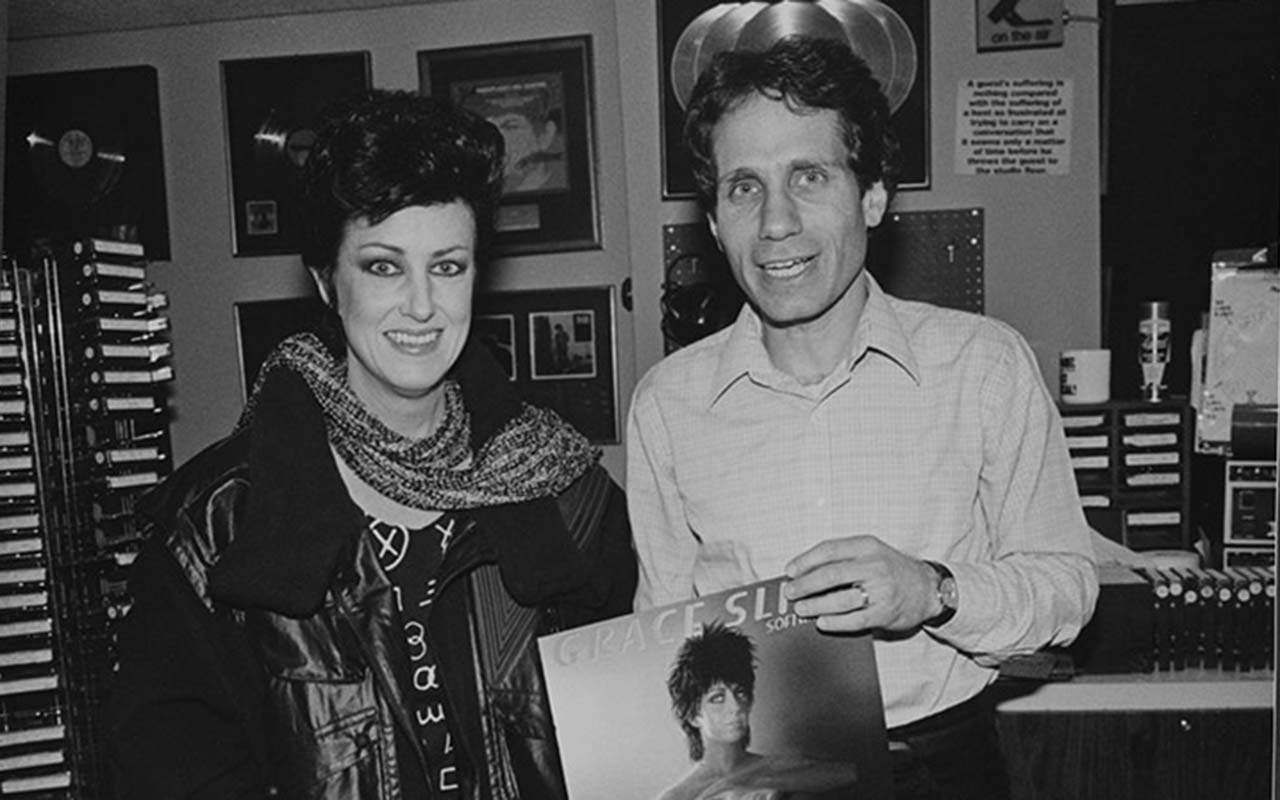
Grace Slick – Jefferson Airplane
The “voice that may have launched a thousand trips”, Grace Slick is best known for her work with the Jefferson Airplane. As the Airplane morphed into the Starship in the 70’s, Grace continued to record with them, while also releasing solo albums. By the 80’s the band had become an on-again off again act, but during her visit to my show on Feb 8, 1984 promoting her new album Software, she recalled one of their biggest hits.
Little Richard
Little Richard was the self-proclaimed “architect of rock ‘n’ roll.” Never one to be shy about his musical contributions, you cannot underestimate his importance and everlasting influence in American popular music. Born Richard Penniman on December 5, 1942, his recent passing on May 9, 2020 brought forth a stream of testimonials and appreciation from a diverse mix of music and entertainment royalty.
I met Little Richard in the fall of 1984 as he was promoting the release of his authorized biography, Quasar of Rock: The Life and Times of Little Richard. It was my first assignment as the rock correspondent for TV’s PM Magazine and a fitting way to begin my latest adventure in rock ‘n’ roll. We filmed the segment in the fall of 1984 at the Limelight, a New York City nightclub that was once a church. It was the perfect setting for the rocker evangelist who was about to be born once again.
Beginning with “Tutti Frutti” in 1955 and continuing with “Long Tall Sally,” “Lucille,” “Good Golly Miss Molly,” “Rip It Up,” “Ready Teddy,” and so many more, his signature sound and look were defining contributions to the development of rock ‘n’ roll. From Paul McCartney’s falsetto “woos” to the pompadour of Prince, Little Richard’s style transcends generations of rock performers.
Richard’s career was never a smooth one. After an amazing string of hits on Specialty Records and show-stopping performances (including TV and film) he suddenly announced that he was abandoning rock ‘n’ roll for religion. In 1958 he formed the Little Richard Evangelistic Team and traveled across the country to preach. His musical releases turned to gospel, but while on tour in England in 1962 he began a return to rock. Greeted with enthusiastic audiences and adulation from young British rockers, it wasn’t long before he was back touring as the headliner. Among his opening acts on that tour were the up and coming Beatles and later, The Rolling Stones.
His touring band, The Upsetters, featured the teenage keyboard player Billy Preston and a developing guitarist named Jimmy (later Jimi) Hendrix who joined the Upsetters in 1964. Jimi only lasted till the following year. He was fired over his tardiness, wardrobe, and especially his on-stage antics which threatened to upstage the legendarily flamboyant Richard.
Throughout the rest of the 60’s and 70’s, Little Richard recorded for a succession of record labels and often was featured as a guest performer on other artists’ records. He quit rock ‘n’ roll again in 1977 after battling alcohol and drug abuse and returned to evangelism.
In January 1986 Little Richard was one of the original ten performers inducted into the Rock and Roll Hall of Fame. Later that year he had a featured role in the acclaimed film “Down and Out in Beverly Hills” and soon became a frequent guest on numerous TV talk and variety shows. He resumed recording and touring and finally seemed to be receiving the recognition he deserved for his contributions to the musical genre he had helped to create.
Richard announced his retirement in the fall of 2013, just shy of his 81st birthday following a heart attack, but remained very resolute about his legacy. “When I started in show business,” he told Rolling Stone magazine, “there wasn’t no such thing as rock ’n’ roll. When I started with ‘Tutti Frutti’ that’s when rock really started rocking.”
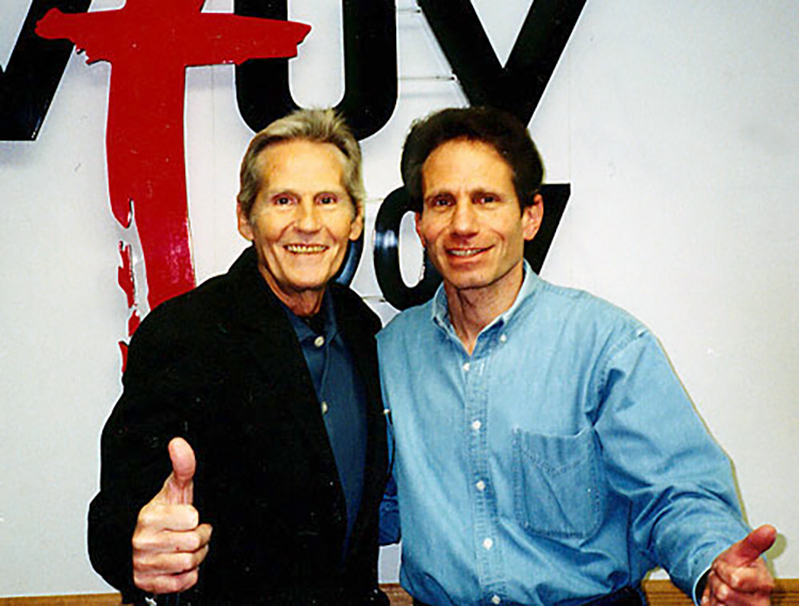
Levon Helm – The Band
Levon Helm is an American treasure. Beginning as a drummer with Ronnie Hawkins and the Hawks, later working with Bob Dylan and then as a founding member of the legendary Band, he was always regarded as a “musician’s musician.” In recent years that respect continued to grow and Levon’s Midnight Ramble sessions at his Woodstock studio became sold out must see events with a stellar list of all-star performers and celebrities.
He’s also an accomplished film actor with critically acclaimed performances in Coal Miner’s Daughter and The Right Stuff. His book This Wheel’s on Fire provided an insiders look into the Band’s storied history.
In 1996 Levon was diagnosed with throat cancer and his distinctive singing voice was silenced for awhile. When he stopped by for a live studio visit in November 2000 he sat in on drums with a local band, The Electrix, unable to sing, but lighting up the room with his energy and enthusiasm. We spoke about his history, the dawn of the new century and since it was Thanksgiving weekend, reminisced about The Band’s farewell performance, dubbed The Last Waltz.
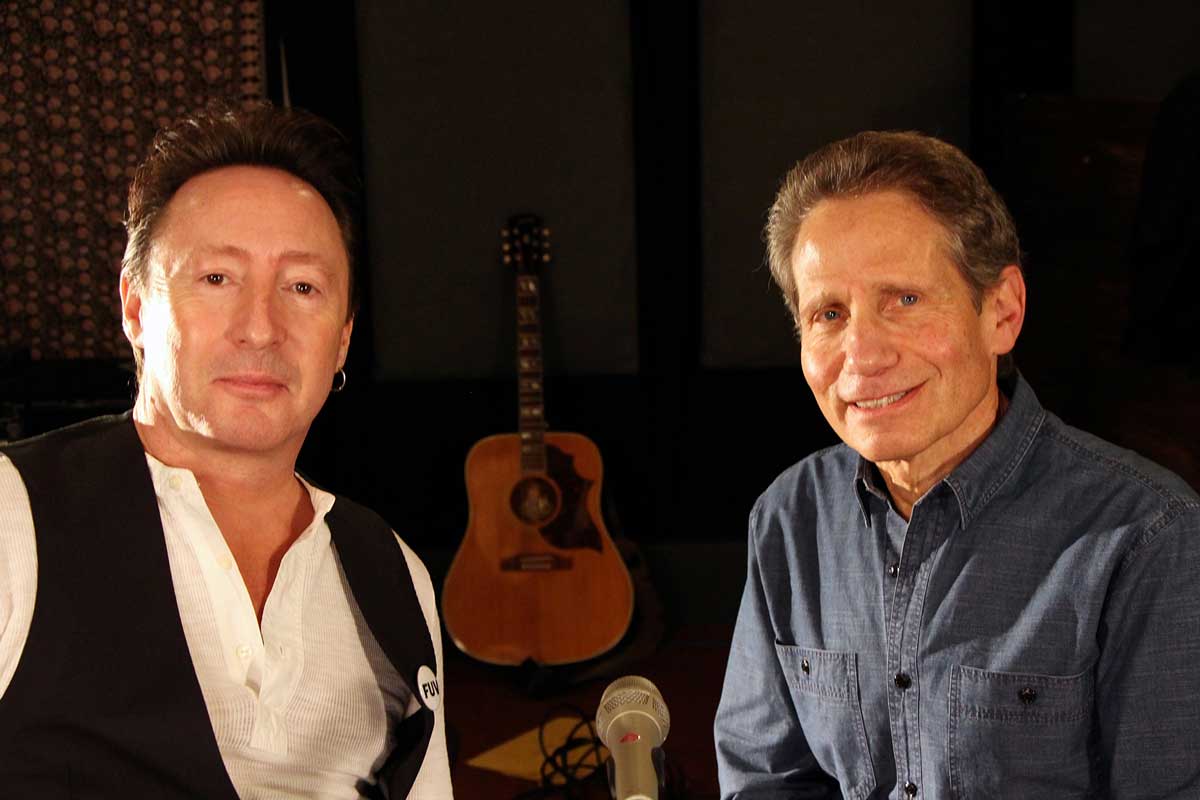
Julian Lennon
Julian Lennon was twenty-one years old when we first met and talked in 1984. He had just burst onto the music charts with the hit single and album Valotte. But his presence in the music world had been established years before for supplying his father John Lennon with the inspiration for the song “Lucy in The Sky With Diamonds” as well as being the subject of Paul McCartney’s Beatles’ classic “Hey Jude.”
With the platinum success of Valotte and a 1985 Grammy nomination for Best New Artist, it seemed that Julian was destined to continue in his father’s footsteps as a long-term recording and touring musician. Four more albums followed over the next thirteen years, but a growing sense of frustration and disappointment with the music business led Julian to pursue other artistic endeavors. He emerged as a talented photographer with well received and critically acclaimed exhibitions.
In 2011 he decided to return to making music and began work on a new album. Officially released worldwide in 2013, Everything Changes is his first album in fifteen years and the title seems to be the perfect description for Julian’s approach to his life and career.
Talking with him at WFUV in November 2013, he performed songs from his new album as we discussed a variety of subjects – including why he chose to reference a well known Beatles’ lyric in his own music, reclaim his family legacy, recording with Steven Tyler, and how a comment John once made inspired Julian to create the charitable White Feather Foundation.
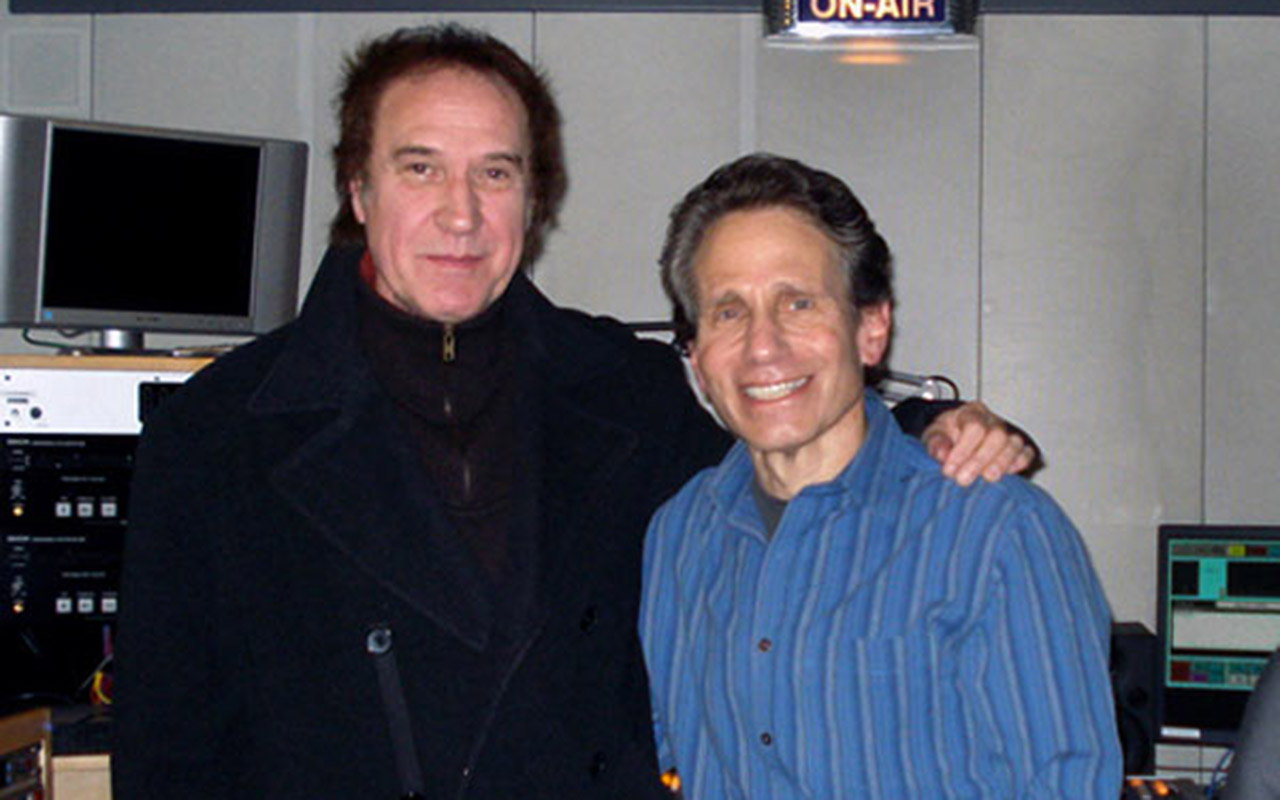
Ray Davies – The Kinks
Of all the bands to come out of the British Invasion I always thought that the Kinks’ music was the most representative of life in England. Their long time leader and primary songwriter, Ray Davies, captured the characters of his North London upbringing (Muswell Hill) with clarity and wit. He also wound up writing and recording one of the best songs ever about Hollywood, two of the greatest rock ‘n’ roll hits of the 60’s and so many more.
In the fall of 2009 he toured and released a new album called the Kinks Choral Collection and we explored some of those wonderful Kinks Classics.
To listen to my full interview with Ray Davies click here
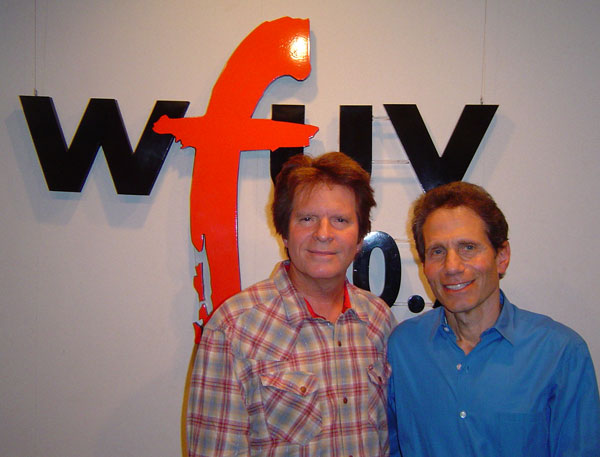
John Fogerty – Creedence Clearwater Revival
Creedence Clearwater Revival was one of the most successful bands of the late 1960’s and early 70’s.
Their leader, John Fogerty, emerged as a performer with one of the most distinctive vocal and guitar sounds in rock ‘n’ roll. Many of the songs he wrote and recorded became not only rock classics, but also political touchstones of the period.
Disbanding the group in 1972, he went on to pursue a solo career and continued making memorable music.
Despite his success, there were lengthy legal battles with his former record company and bandmates that made it difficult for him to embrace CCR’s legacy.
In 2005 John finally made peace with his past symbolized by re-signing with his former record company (Fantasy Records, now under new ownership). He has since released several CD’s and DVD’s including Revival which was released in October 2007.
We spoke in the fall of 2004 and again in 2007 about his latest releases, and, of course, that classic Creedence sound.
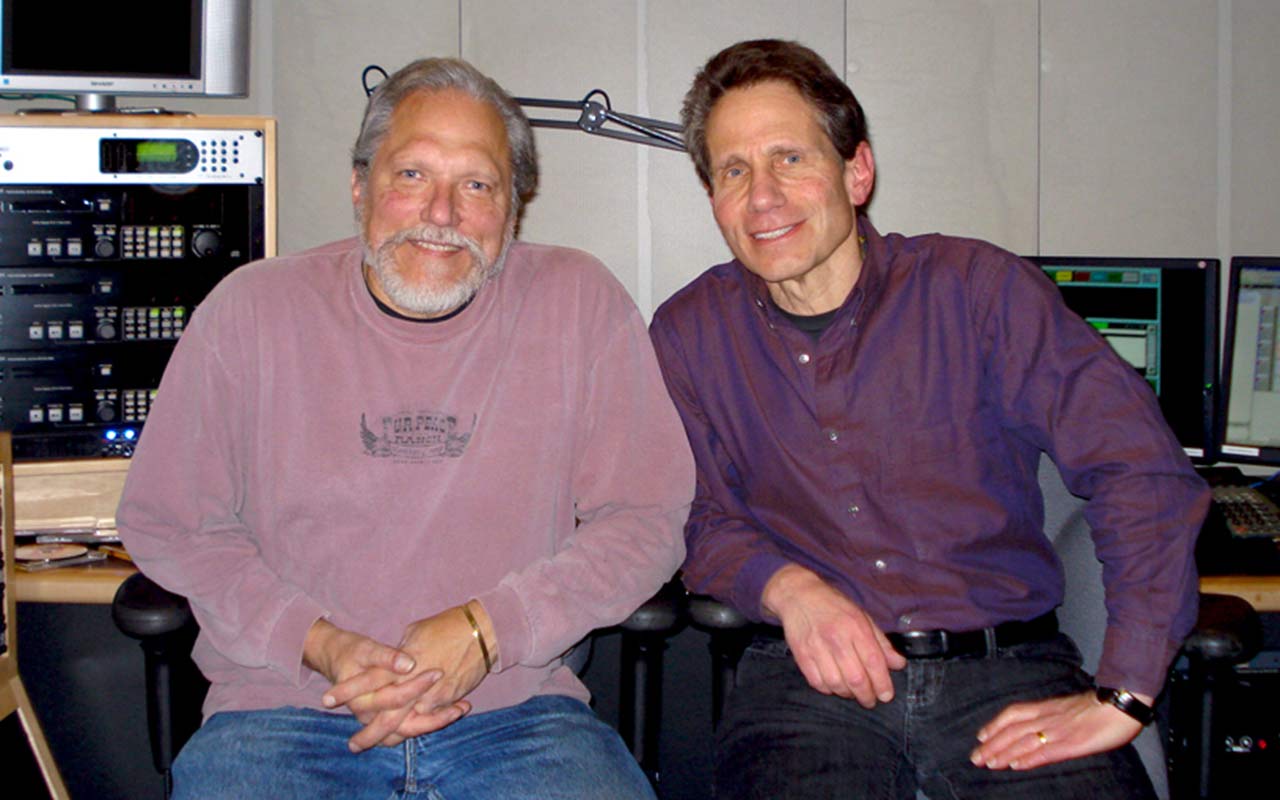
Jorma Kaukonen – Hot Tuna and Jefferson Airplane
As a founding member of Jefferson Airplane and Hot Tuna, Jorma Kaukonen has long been an important and respected figure in rock and roll history.
Though the original Airplane disbanded in 1972 and Hot Tuna has been through various changes of personnel and status, Jorma has never stopped performing and recording. His unique fingerstyle guitar playing has been heard in numerous solo projects and together with Jack Cassady he’s often back on the road as Hot Tuna.
Jorma and his wife Vanessa own and operate the Fur Peace Ranch, a music and guitar camp in the hills of Southeast Ohio. Aspiring musicians from all over the world travel there to study with Jorma and an amazing array of guitar masters.
When he visited with me along with fellow musician Barry Mitterhoff, in January 2008 he shared some early Airplane/Tuna history.
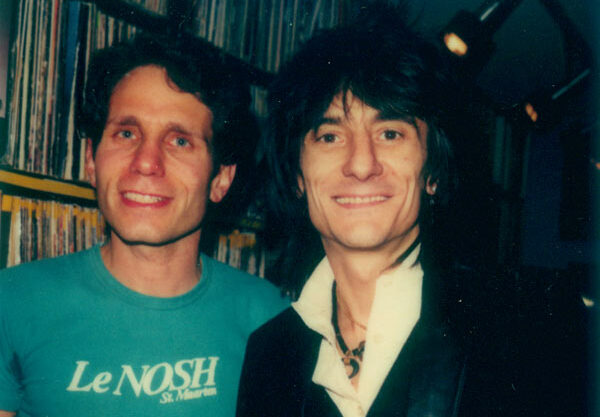
Ronnie Wood – The Rolling Stones
There are a lot of different ways to celebrate New Year’s Eve, but I’ll always remember 12/31/82 as the one I got to spend with Ron Wood. Stopping by my show to promote an upcoming appearance, Ron and his entourage were clearly in a holiday mood. With a rock ‘n’ roll lineage that includes the Jeff Beck Group, the Faces, and the Stones he had some great stories to share, plus a comment about their upcoming album Undercover that made me hope the FCC wasn’t listening.
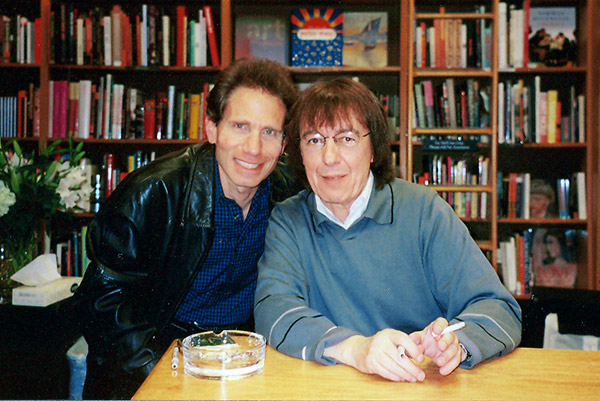
Bill Wyman — The Rolling Stones
He’s played with a band called Willy and the Poor Boys and still performs with the Rhythm Kings, but Bill Wyman remains best known as the long time bass player for The Rolling Stones. He joined the Stones in Dec 1962 and for the next thirty years recorded and performed with the group as they became “the world’s greatest rock ‘n’ roll band”. Recently he reunited with them briefly as a special guest on stage as they kicked off their 50th anniversary celebration.
After leaving the Stones in 1992 to focus on getting his personal life straightened out, he has written numerous books, continued to play and record music and even opened a successful London restaurant called Sticky Fingers. An avid collector of many things, Wyman has often been called the Rolling Stones archivist. His impressive coffee table style Rolling With The Stones book is a wonderful insight into the band’s history, filled with a remarkable collection of photos, posters, ticket stubs, and stories that only he could tell.
I spoke to Bill Wyman in the fall of 2002 when the book was released and among the many subjects we covered, I wanted to learn the definitive story of how the band got their name.
Andrew Loog Oldham — The Rolling Stones
Andrew Loog Oldham began working as a young publicist in London in the early 1960’s, just as the British music, fashion and social scene were starting to explode. He was first an assistant to designer Mary Quant and then helped to promote The Beatles for Brian Epstein. He was just 19 years old when he went to see a relatively unknown group called The Rolling Stones. Before long he was their manager, producer and is generally credited with creating their “bad boy” image.
He left the Stones in 1967 and continued his work in the music business with his label Immediate Records which had a stellar roster of artists including Small Faces and The Nice.
In recent years he has published several entertaining autobiographies and memoirs, the latest is called Rolling Stoned. Currently he can be heard daily as a disc jockey on Sirius/XM’s Underground Garage sharing his vast knowledge of the music he presents and offering insights and opinions that are wonderful to listen to.
I spoke with Andrew in October 2012 when he came to WFUV to promote “Charlie is My Darling” a cinema verite film that chronicles the Stones on tour in Ireland in 1965. Finally completed more than 45 years after its original filming we get to view the Stones backstage and on-stage with some amazing footage I had never seen before. As part of the informal backstage rehearsal scenes, Mick and Keith sing bits of assorted Beatles’ songs along with working on new songs they’ve recently written.
I had always wondered how and why the Stones had come to record and release Lennon and McCartney’s “I Wanna Be Your Man” as their second single. I asked Andrew about his reported chance meeting with John and Paul in London’s Leicester Square and he filled me in on the details

Bev Bevan – ELO
The Electric Light Orchestra (ELO) were always one of my favorite bands, and in the midst of one of their most creative periods I welcomed drummer and co-founder Bev Bevan to the studio on December 5, 1977.
Although Jeff Lynne would eventually emerge as the group’s de facto leader, it was Bev who was the band’s spokesman. We discussed their origins as The Move and how they transitioned into ELO, breaking new ground with orchestral rock. I asked how he felt about being compared to The Beatles and he unknowingly referenced a comment John Lennon had made about them on my show just a few years earlier. Bev explained the process behind their graphics and album covers including A New World Record which featured the very colorful ELO logo floating above the New York skyline at night. It was the perfect opportunity to share the story of how I just happened to be playing that very album only a few months before at the very moment that New York City plunged into darkness with a major summer blackout.
It was ELO that was spinning on the turntable during my show just a few months earlier on July 13, 1977 when a major blackout crippled the New York area. Here’s how it sounded at WNEW-FM when Scott Muni and I returned to the airwaves the following day.
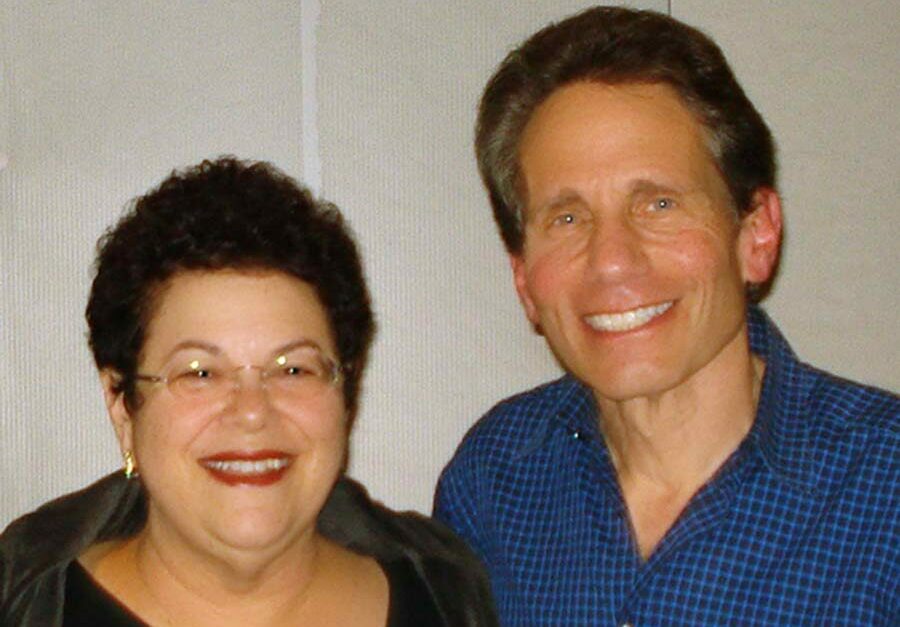
Phoebe Snow
Phoebe Snow arrived on the music scene with her debut album in 1974 which contained the haunting song “Poetry Man.” Her beautiful voice was matched with impeccable production from Phil Ramone, and the song’s mysterious lyrics helped to establish her as a major new artist.
Though she never achieved another commercial hit quite as big, her stature as a musical performer and personality continued to grow. Everybody loved Phoebe and welcomed her to the stage and airwaves when she chose to perform.
It was a choice that wasn’t always easy for Phoebe. Her career often took a backseat to caring for her daughter Valerie who was born in December 1975 with severe brain damage. Phoebe was determined to be her primary caregiver and continued to do that until Valerie’s death in March 2007.
In October 2007 she was just beginning to resume her career with a series of shows at New York’s Birdland club. I welcomed her to WFUV, joking that she could use our Studio A as a rehearsal stage as long as we could listen in. Phoebe was in great spirits, superb voice, and shared some wonderful stories with me including finally revealing exactly who that “Poetry Man” was.
Sadly, Phoebe passed away April 26, 2011, but her beautiful voice lives on in the wonderful recordings she left us and this very memorable studio session.
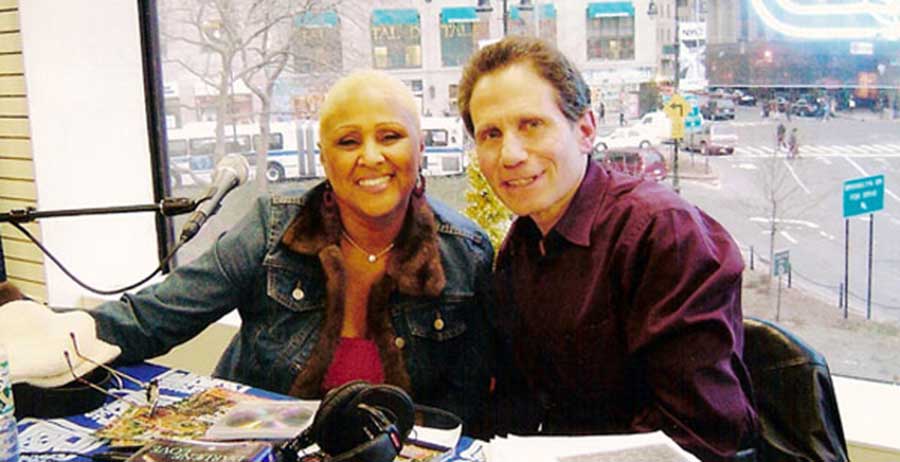
Darlene Love – The Phil Spector Christmas Album
She’s been a Blossom, a Crystal and even part of Bob B. Sox and the Blue Jeans, but Darlene Love’s voice always stands out on its own. Working in the sixties with producer Phil Spector she sang lead on “He’s a Rebel”, “He’s Sure the Boy I Love”, “Today I Met the Boy I’m Going to Marry” and perhaps the best known song from his legendary holiday album A Christmas Gift for You – “Christmas (Baby Please Come Home)”.
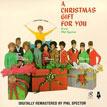
During the seventies she worked as a back-up singer and raised a family. In the eighties and nineties she appeared on Broadway in Leader of the Pack and Grease and in the Lethal Weapon movies playing Danny Glover’s wife. She appeared in 1986 on Late Night with David Letterman to sing her Christmas song and has returned every year since at Dave’s special invitation to ring in the holiday season. We spoke about that tradition and more on December 18, 2003.
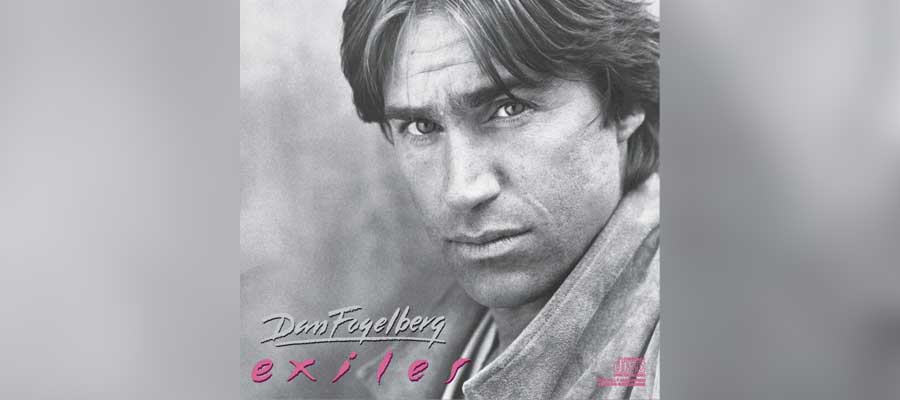
Dan Fogelberg
I was sad to hear in December 2007 of the death of Dan Fogelberg at 56 of prostate cancer. Beginning with his first album Home Free in 1972, his music and voice had a great quality that seemed to reflect a loving and positive approach to life. Speaking with him in September 1987 at WNEW-FM, we discussed his then current release Exiles, life on the road in New York, and the story behind the holiday classic “Same Old Lang Syne.”

LENNONYC
LENNONYC is a wonderful film exploring John’s life in New York during the 1970’s. The movie features never before heard studio recordings from Double Fantasy, previously unseen home recordings, concert outtakes, and highlights from my own historic 1974 interview with John. The story is told through John’s own words and recent on-screen interviews with many of the people he worked and lived with during that time. I’m honored to be part of this group of eyewitnesses, including Elton John, producer Jack Douglas, Yoko Ono, May Pang, photographer Bob Gruen and many more.
On October 7th (2010) I participated in a special screening and panel discussion at the Paley Center for Media along with the film’s director Michael Epstein, executive producer Susan Lacy and the legendary Dick Cavett.
Two nights later – October 9th – I was the Master of Ceremonies for an exclusive free Central Park screening before thousands of fans, in honor of what would have been John’s 70th birthday.
The video clip above is from ABC’s Good Morning America.
LENNONYC premiered on PBS stations around the country in November 2010 and is also available on DVD.
The Beatles Invade America
America met the Beatles for the first time on February 7th 1964, and from that day on, the music world and my life were never quite the same. Beatlemania erupted that chilly afternoon as they arrived at New York’s Kennedy Airport, and continued to build momentum as events unfolded over the following week.
I was glued to my AM radio following their trip to the Plaza Hotel, their appearances on The Ed Sullivan Show, on-the-air with Murray the K, traveling to Washington DC and Miami, and performing at Carnegie Hall.
There was no way for me to imagine then as a teenager the impact their music would have on me personally and professionally.
Within five years I was on-the-air myself, on the FM side, playing their records and sharing the news of their evolution from the Fab 4 to solo careers. To have my 1974 two hour live on-air conversation with John Lennon become an important part of their historical record remains one of my greatest thrills.
Their arrival was a story I always wanted to revisit in detail. In 2004, on the 40th anniversary, I did just that with an award winning documentary complete with rare broadcast moments and exclusive interviews with newsman Walter Cronkite, filmmaker Albert Maysles, concert promoter Sid Bernstein, radio personality Dan Daniel, John Lennon and others.
Updated now for 2024, “It Was 60 Years Ago Today – The Beatles Invade America” recounts the events leading up to and following the Beatles arrival at Kennedy Airport on February 7, 1964. It also explores how New York radio covered the Beatles’ arrival and competed to be the source for all things “Beatles.”
Highlights from the show are featured prominently in the Grammy Museum’s traveling
exhibit Ladies and Gentleman…The Beatles! curated by the Grammy Museum and on display now at The New York Public Library for the Performing Arts at Lincoln Center.
You can listen to a preview of It Was Sixty Years Ago Today – The Beatles Invade America below or enjoy the complete show here.
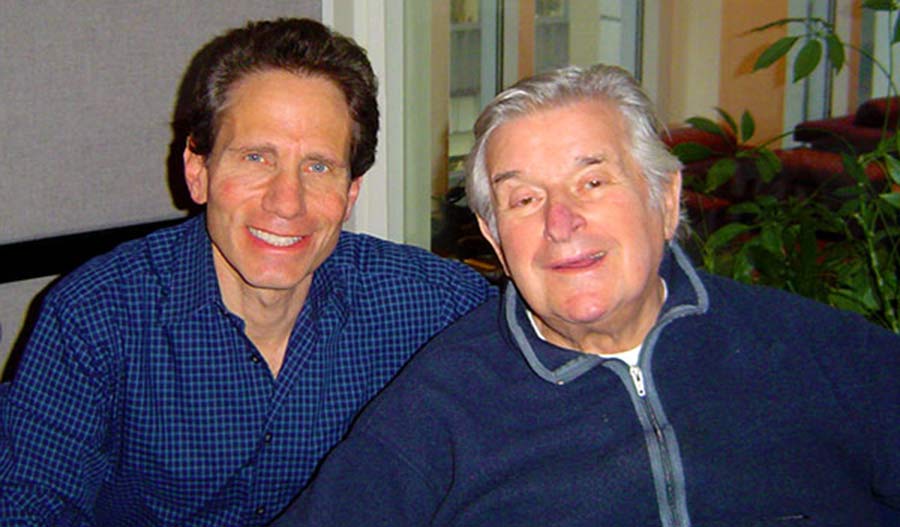
Sid Bernstein and the Beatles
Rock ‘N’ Roll History is filled with a wide assortment of personalities and Sid Bernstein was one of it’s most unlikely heroes. As a 45 year old talent promoter working for the General Artist Corporation in New York City, he was intrigued by the reports he was reading in the British press about a young English group that was creating “hysteria.” Despite the fact that his own agency was not interested in persuing them, he reached out on his own to the band’s manager, Brian Epstein, at home, and wound up booking the Beatles into Carnegie Hall long before America experienced Beatlemania.
The phone call took place early in 1963, the Beatles played Carnegie in February 1964 and Sid brought them back to perform the first rock show in a major sporting arena at Shea Stadium in August 1965. Sid would go on to be involved with an assortment of rock and pop performers, most notably guiding the early career of The Young Rascals. He always held out hope and actively tried to re-unite the Beatles for just one more show, but of course, it was never to be.
Sid Bernstein, who passed away recently (Aug 20, 2013) at the age of 95, was described by almost everyone as a really nice man (‘a mensch’) devoted to his musical passions. I experienced that myself when I got to interview him for my documentary, “It was 40 Years Ago Today” chronicling the initial days of the Beatles conquering America. Sid recalls his first conversation with Brian Epstein, a very unlikely beginning to one of the greatest chapters in Rock ‘N’ Roll history.
To hear the entire documentary, click here
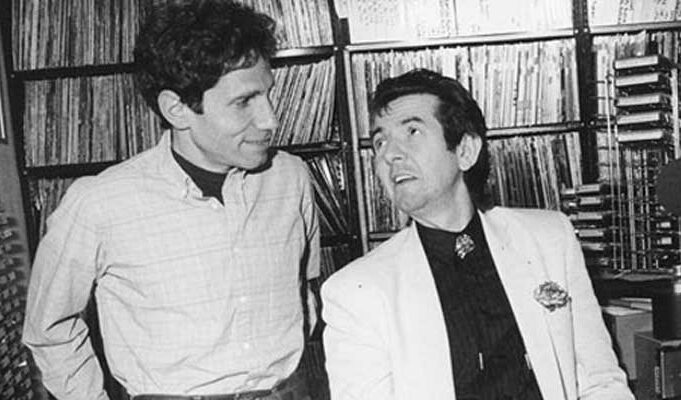
Ronnie Lane – Small Faces
Ronnie Lane was a musician loved and respected by his peers, though never as well known as the famous musicians he played with. He was an original member of the Small Faces that ultimately became Faces joined by Rod Stewart and Ron Wood. Leaving the Faces in 1973 he formed Slim Chance and they toured as a rock n roll circus. He teamed up with Pete Townshend and released the critically acclaimed Rough Mix LP in 1977. When Ronnie was diagnosed with Multiple Sclerosis, his friends including Eric Clapton and Jeff Beck organized and performed the ARMS concerts, launched to raise money to fight the disease. On April 17, 1987 he was in NY to appear with a new group he was working with called The Tremors. We talked about all of these things and even learned the truth about “Itchycoo Park.”
Ian McLagan was a good friend and fellow band mate of Ronnie’s in the Small Faces and Faces. I got his take on some of the same subjects when he and his Austin, TX based group the Bump Band stopped by WFUV in November 2004.
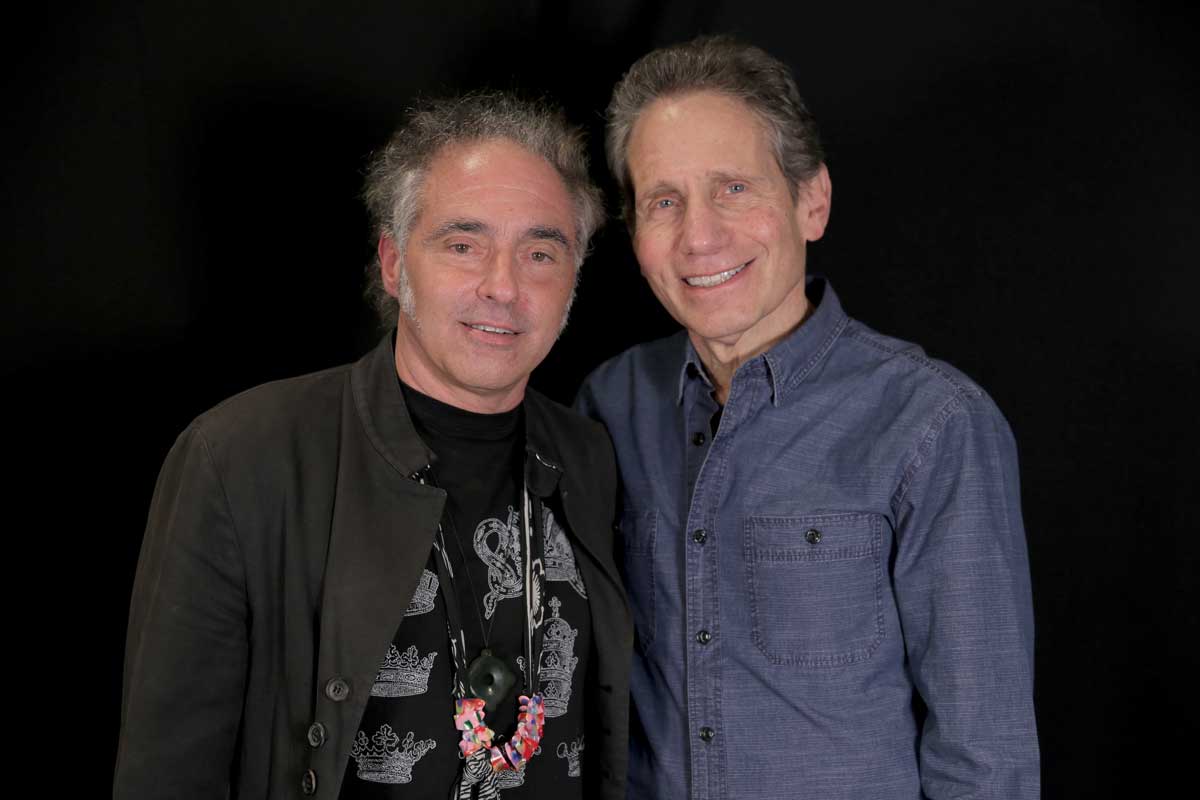
Nils Lofgren
Nils Lofgren is probably the only person who has played guitar or piano with all of these bands: Neil Young’s Crazy Horse, Bruce Springsteen’s E Street Band and Ringo’s All-Starr’s, and his new 9CD/1DVD Box set Face the Music chronicles everything else about his amazing forty-five plus year career.
This new collection is a wonderful mix of the familiar and the rarities, beginning with his early power pop band Grin and moving through his highly acclaimed solo albums of the 70’s and 80’s, and the continuing evolution of his music since then. In addition to the 169 tracks hand picked by Nils, the set comes with a beautifully prepared 136 page booklet. It’s a comprehensive retrospective spotlighting a great period of rock history with detailed commentary about all the songs and great insights into the music from Nils and many of the artists he’s worked with.
I recently had the chance to sit down and catch up with Nils whose music and voice I’ve loved and played throughout the various phases of his career. In this clip you’ll hear how Nils contributed to the recording of Neil Young’s Southern Man and why Keith Richards is the subject of one of his best known songs.
Click here to listen to the full interview.
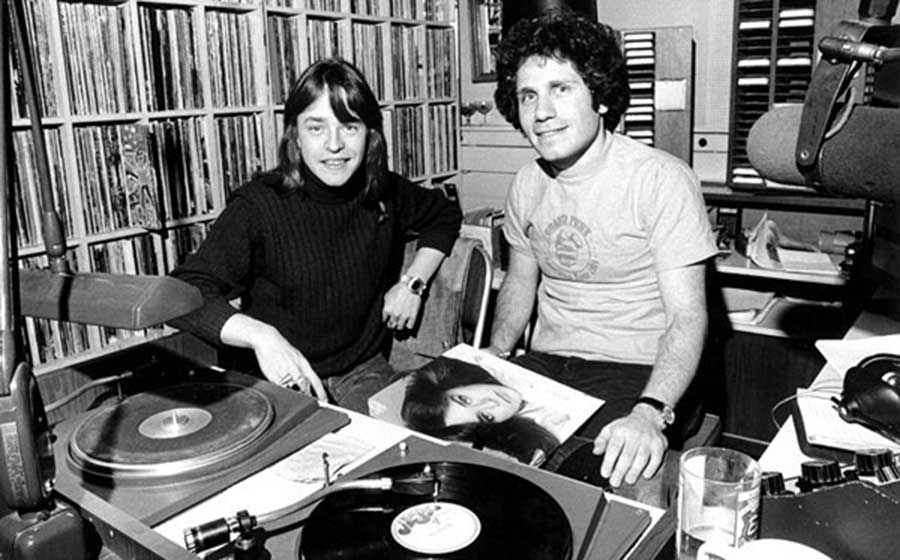
Rick Derringer
Rick Derringer with his band The McCoys had a #1 hit with “Hang on Sloopy” in 1965.
He went on to work and play with Johnny and Edgar Winter in the 70’s, and produced Edgar’s biggest hit “Frankenstein.” In 1973 his solo career took off with “Rock n Roll Hootchie Koo” and in 2010 he was a member of Ringo’s “All-Starr Band.” On April 11, 1975 he stopped by WNEW-FM to promote his new album Spring Fever. Among the many things we discussed, was his decision to re-record “Sloopy.”
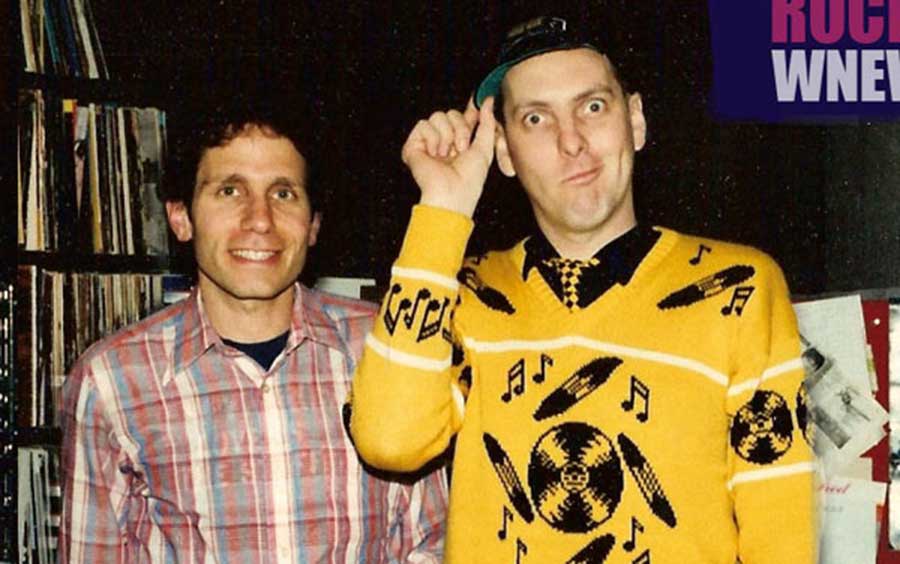
Rick Nielsen – Cheap Trick
Rick Nielsen and Tom Petersson first recorded together in 1968 as the band Fuse with limited success. Returning to their home town of Rockford, Illinois in the early 70’s, they joined with drummer Bun E. Carlos and vocalist Robin Zander to form Cheap Trick. Their 1977 debut album was well received in the US, but in Japan they quickly became superstars. Capturing the energy and excitement of their live shows, the album At Budokan (released initially only in Japan in 1978, and in the USA in 1979), provided the spark for their American breakthrough.
Nearly thirty years later the original group is still recording, touring and supported by a loyal and enthusiastic fan base. The band is heard nightly around the world with the theme to TV’s The Colbert Report and That 70’s Show.
In this 1980 conversation with Rick Nielsen, we discuss the early days of opening for Kiss, their Japanese appeal, and several of their greatest hits.
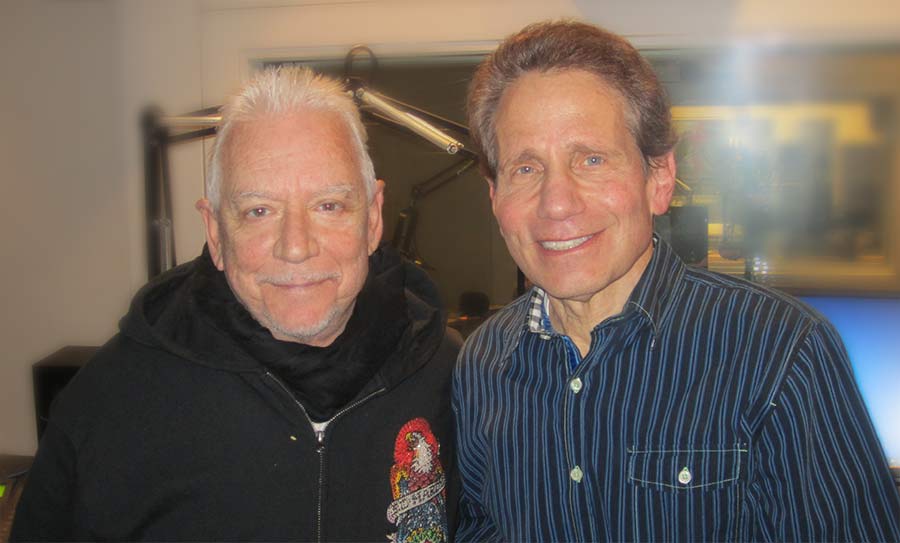
Eric Burdon
The Animals from Newcastle-upon-Tyne, were part of the musical “British Invasion” of the mid-sixties, and responsible for some of that period’s greatest hits. The original lineup of Eric Burdon, Alan Price, Chas Chandler, Hilton Valentine, and John Steel, were only together for two years. Alan Price left in 1965 and Chas Chandler departed the group in 1966 after which he helped to establish the career of Jimi Hendrix as his manager.
Eric, the distinctive lead vocalist, would remain as the band’s leader and together with a successful solo career would continue to keep the group’s name alive.
Throughout the years there were several reunions of the original members and the final one occurred in 1983. They recorded a new album Ark, went out on tour, and visited my show on July 22, 1983 when I spoke with Eric about their biggest hit.
Nearly thirty years later in February 2013, I got to speak with Eric again. This time he was promoting a new solo album ‘Til Your River Runs Dry. On this latest project he’s performing mostly original compositions, but when he was recording with the Animals their earliest successes were written by others. He explained how one of them was actually intended for Nina Simone.

Flo and Eddie – The Turtles
Flo and Eddie are actually Mark Volman and Howard Kaylan, but they’re better known as the lead vocalists of the Turtles. When the group split in the early 70’s, Mark and Howard took on the identity of Flo and Eddie, began touring with Frank Zappa and created a whole new act that incorporated rock satire with their music. Their annual Christmas week shows at New York’s Bottom Line became a Holiday tradition and so did their visits to my show. During their appearance in December of 1978 they recalled how they were participants in a bit of rock n roll history forever immortalized in a Deep Purple song.
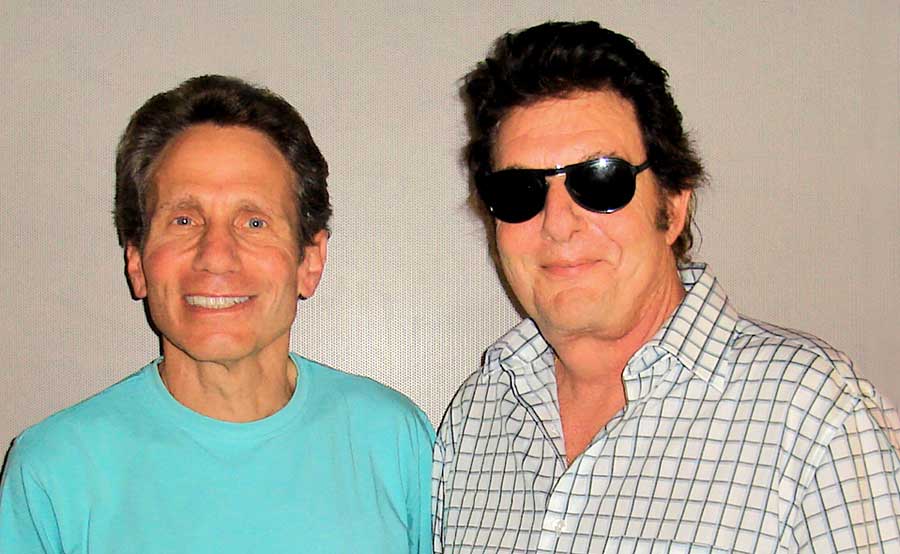
P.F. Sloan – Eve of Destruction
When I spoke with PF Sloan in the summer of 2006 he had just released Sailover his first new album in more than thirty years. There had always been an air of mystery surrounding his life and career and so I wasn’t quite sure what to expect from our conversation. I was very intrigued to meet the man who wrote “Eve of Destruction”, one of the biggest hits of 1965 and still one of the defining protest songs of the era. He was also the co-writer with Steve Bari of some of my favorite pop songs of the 60’s including “You Baby” for the Turtles, “A Must to Avoid” by Herman’s Hermits and “Secret Agent Man” recorded by Johnny Rivers.
We talked about the new album and some of the guests that appeared on it including Lucinda Williams, Buddy Miller, and Frank Black. He was candid but cautious in providing the stories behind the songs both old and new, just adding a bit more to the mystery of his legacy. Bringing along his guitar he played a few songs from the new album and treated us to a wonderful live version of “Secret Agent Man.”
In the early 70’s Jimmy Webb wrote and the Association recorded the song “PF Sloan” which wondered aloud where had he gone. PF must have wondered also, since he was never able to find further fame and recognition within the emerging singer-songwriter scene. I was very sad to learn of his death from pancreatic cancer on November 15, 2015 at the age of 70.
Click here to listen to the full interview.
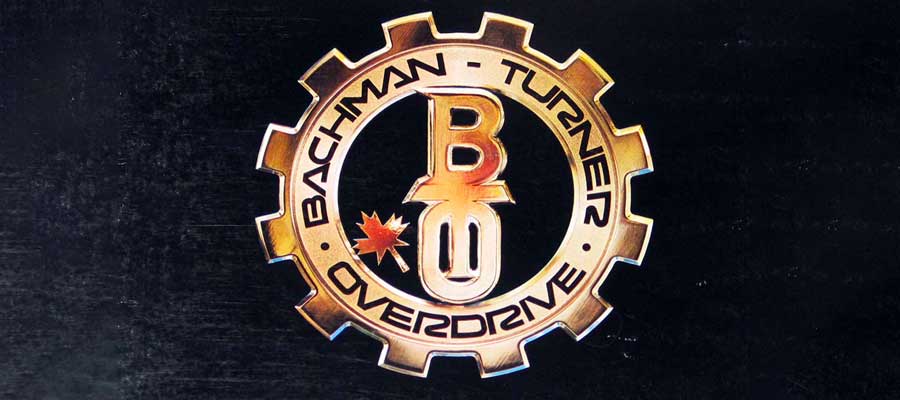
Randy Bachman
When Randy Bachman was my guest on December 7, 1974 – his group BTO (Bachman-Turner Overdrive) had emerged over that year as one of the most successful new bands of the era. Having just scored their first number one hit with “You Ain’t Seen Nothing Yet”, they were in New York to play a sold out show at an unusual venue.
They were booked as the first group (and maybe the last) to play the NFE – a short-lived attempt in re-opening the legendary Fillmore East. As Randy explained it to me, the last time he had played in New York (four years earlier) had been at the original Fillmore, as a founding member of his earlier band the Guess Who. He liked the idea of returning to the same place to celebrate BTO’s success. We talked about a lot of their music, including this song (released just six months earlier) that was already taking on an anthem-like status.
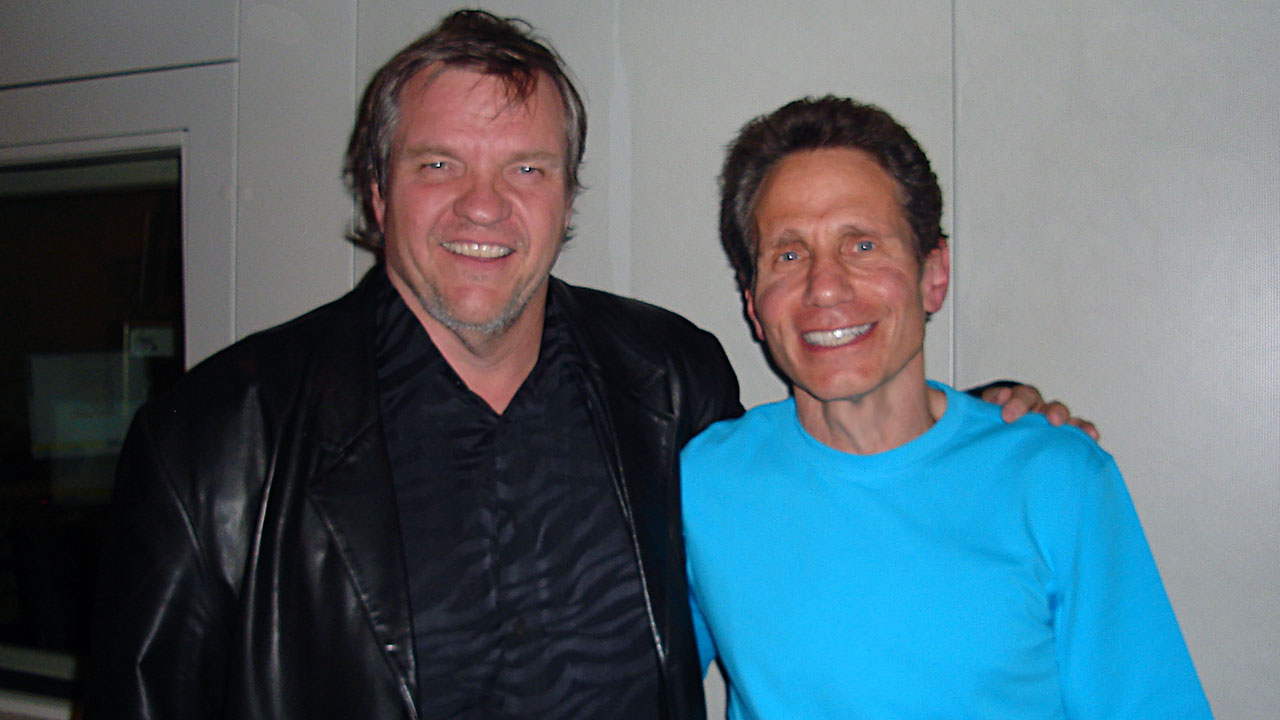
Meat Loaf
I interviewed Meat Loaf for the first time for WNEW-FM in 1977 when the original Bat Out of Hell was released. With the amazing success of that album, Meat (or Mr. Loaf as the NY Times once referred to him) and his songwriting partner Jim Steinman had created an instant rock classic. Shortly after its release, we sat down in a New York recording studio to explore this diverse collection of theatrical rock ‘n’ roll produced by Todd Rundgren. Among other things, I wanted to find out how New York Yankee legend Phil Rizzuto had become a pivotal part of “Paradise By the Dashboard Light.”
Nearly thirty years later (Aug 2006) Meat Loaf and I would sit-down again, only this time it was at WFUV as he was about to release Bat Out of Hell 3. He was funny, gracious and wonderfully candid about his remarkable journey as an actor and musical performer. He was truly one of a kind. I was very sad to learn of his recent passing on Jan 20, 2022 at age 74.
You can hear the entire show here
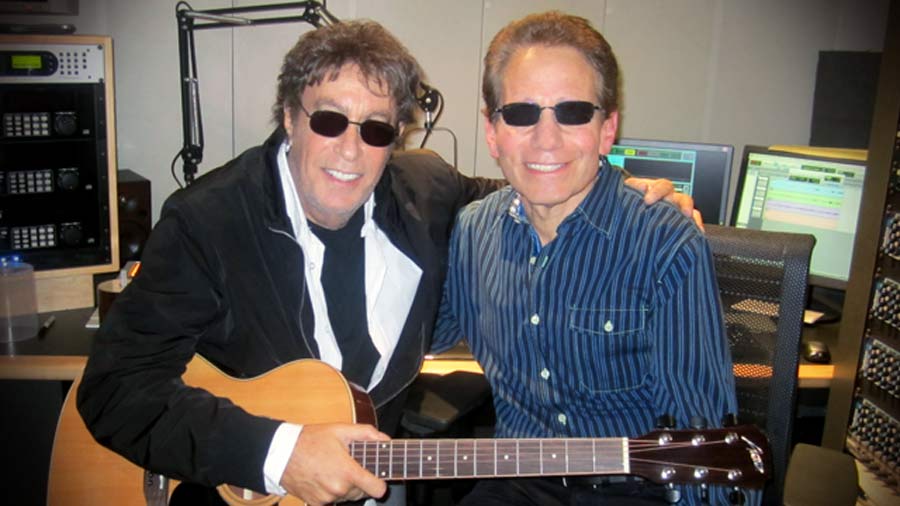
Kenny Vance
In 1975 I received a record at WNEW-FM that I immediately fell in love with. It was “Looking For an Echo” by Kenny Vance, a track off his first solo album Vance 32 that paid tribute to the doo-wop era, but with a contemporary sound. I didn’t know much about Kenny’s background other than he had been part of a very successful 60’s group, Jay & The Americans.
The album came and went, but the song always stuck with me. A few years later I learned that Kenny had been music producer and supervisor for a film I had just seen about the life of the legendary disc jockey Alan Freed, American Hot Wax.
Kenny’s group “The Planatones” would emerge from a fictional group that was portrayed in the film, but it would take fourteen years for that to happen. During that time he was involved with an assortment of musical projects including “Saturday Night Live” and the films Eddie and the Cruisers and Animal House.
Today Kenny and the Planatones maintain a busy touring schedule with a wonderful show that evokes the musical spirit of the 50’s and 60’s and brings us up to date on the endless search for that perfect echo. Their new album is called Acapella I finally got a chance to get the complete story behind the song and clarify who exactly was Jay in Jay & The Americans when we spoke in December 2012.
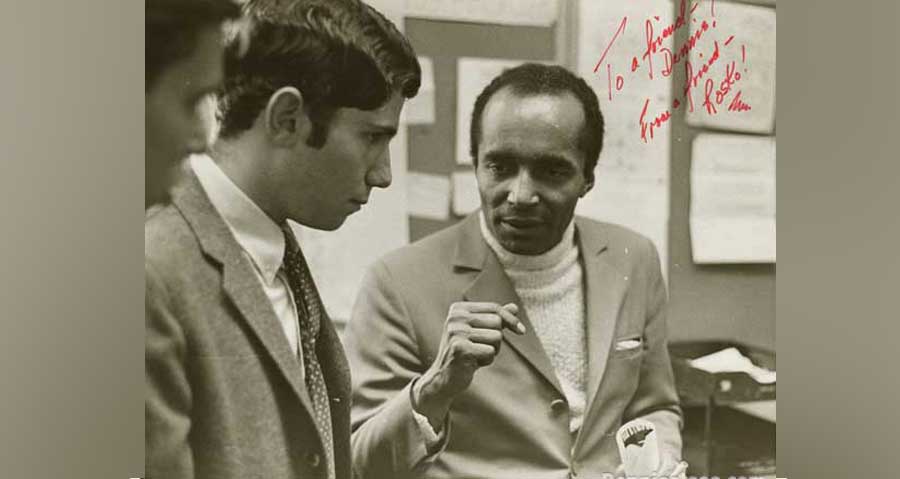
Rosko
This photograph was taken on October 17, 1967. The young, earnest looking guy in the tie is me – then program director and disc jockey at my college radio station WQMC (Queens College).
I’m listening to Rosko, who had emerged over 1966 as one of the most admired and unique radio personalities on the new FM scene. He had been part of NY’s first progressive rock station – WOR-FM – and I invited him to speak to the students on-campus. A month earlier we had picked the date, but in the interim he had resigned from WOR-FM and told me on the phone he was switching to WNEW-FM. He asked if he might bring his new general manager, George Duncan, along. He thought it would give George the opportunity to get a sense of what the college audience WNEW-FM was looking to reach was all about. It was a great afternoon and this picture brings it all back for me.
I always appreciated the irony that nine years later in May 1976 I would take over the same nighttime shift as one of my first FM mentors. In retrospect, I must have paid careful attention to whatever he was telling me that day.
Two weeks later, WNEW-FM’s transition was underway. A year earlier they had adopted a format as the first station in NY with all female DJs, playing music that was a type of light rock often referred to as “chicken rock”. Alison Steele, the only one of the DJ’s who would stay with the station and later become famous as “the Nightbird”, is explaining what’s about to happen on October 30, 1967.
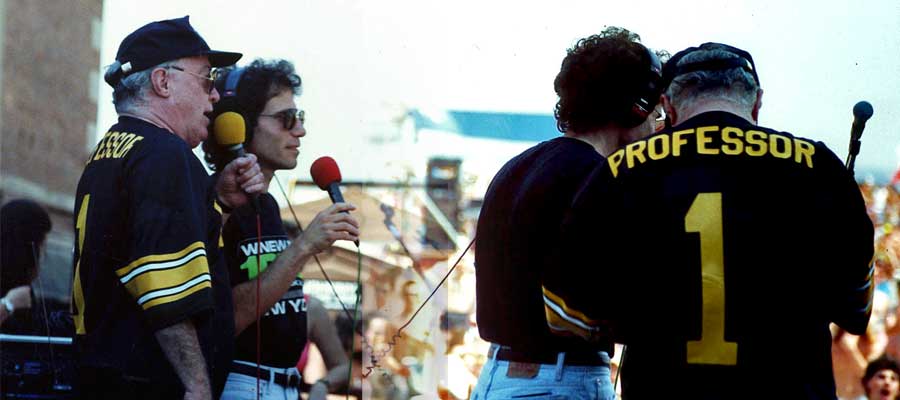
Scott Muni
“I grew up listening to you,” I told Scott Muni the first time I met him in June 1971. Scott was the program director at WNEW-FM, and I was hoping to make a good first impression on my job interview. His response was a bemused vocal grunt, which I would later learn was Muni verbal shorthand for almost anything. I (and most of the staff) would subsequently spend many years mimicking that sound and his unique gravely voice, in our never ending game of admiration and imitation of our Boss.
I really had grown up listening to him. From New York’s powerhouse AM Top 40 stations WMCA and WABC, to the brave new world of progressive FM rock (initially at WOR-FM before he came to WNEW-FM on December 18th, 1967), I was a fan.
Initially he hired me as a part-timer for summer relief. Within six months I became the station’s music director working directly for and with him, an experience that was an amazing education in the world of rock radio and the music industry. He played hard and he played to win, but he always had fun and mostly success in doing so.
We worked together through 1997 up until the final dismantling of the once proud place “Where Rock Lived.” All through the years, he never let me forget that first comment about growing up listening to him and was always amused when he began to hear the next generation of listeners tell me the same thing about myself.
I don’t remember that he or anyone else within the station actually referred to him off-air as “The Professor.” It was a nickname given to him sometime in the mid to late 1980’s by one of the many programming consultants that kept trying to re-shape our sound. We preferred “Fats” – a loving term of endearment that he often used for almost anyone that played on his team.
This audio is from April 30th, 1979. It was WNEW-FM’s final night broadcasting from our legendary studios at 565 Fifth Avenue just before our facilities were to move across town. I’m doing my nightly 6-10PM show and have invited “Scottso” to sit in for awhile following his afternoon shift and share some memories with me and our loyal WNEW-FM audience. Here’s an audio snapshot of that moment in time:
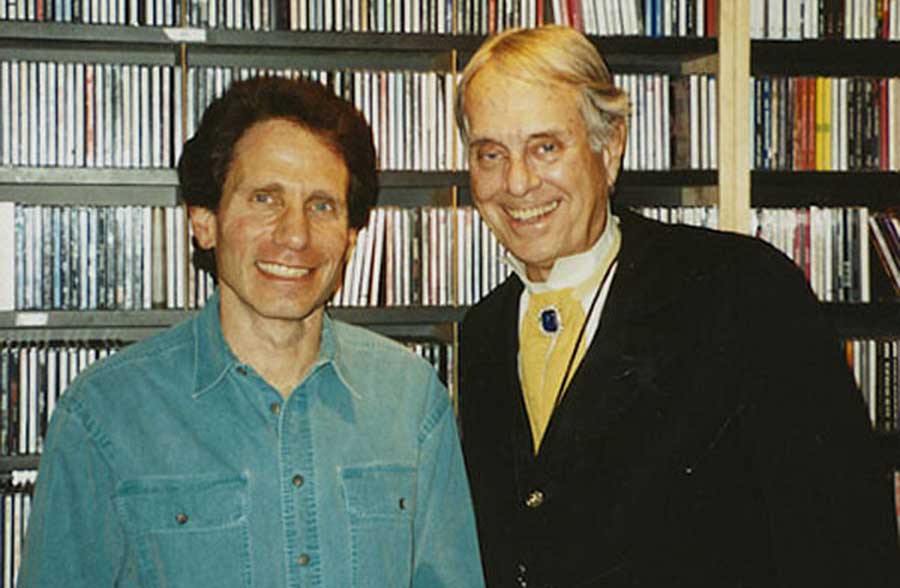
Zacherle
Dressed as an undertaker, John Zacherle became known as “The Cool Ghoul”, hosting horror movies on television in the late 1950’s and early 60’s. Known just as Zacherle, his outrageous presentation and unforgettable laugh were far more entertaining and memorable than most of the films he showed.
He even had a national top ten hit single with the great novelty song “Dinner with Drac” in 1958.
In the mid to late 60’s he hosted Disc-O- Teen, a TV dance show on a small UHF station in New Jersey. He joined WNEW-FM in 1967 as a truly unorthodox radio morning man, before switching to late nights. In 1971 he joined WPLJ and became a fixture of NY rock radio over the next ten years.
On Halloween night, 1997 I was lucky enough to have him as my special guest on WNEW-FM.
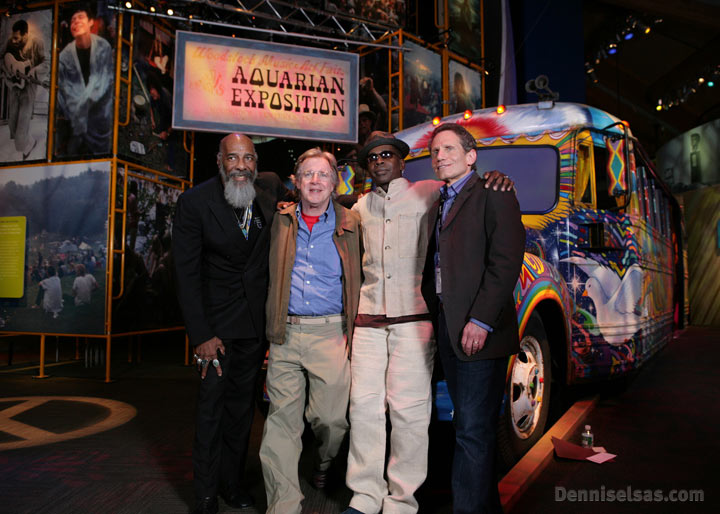
Woodstock Remembered – The 50th Anniversary
Woodstock didn’t happen in the town of Woodstock, NY. The three-day festival that defined a generation actually took place fifty miles away in Bethel, NY. The actual site is still there and remains just as it was with rolling hills that form a natural amphitheater like setting. Nothing blocks your view and there is a small commemorative plaque that was put up in 1984 that lists most of the performer’s names. (Interesting that the spelling of John Sebastian’s name as “Sabastian” has never been corrected.)
Next door is the beautiful Bethel Center for the Arts which includes The Pavillion, an outdoor concert venue that seats over 5,000 people and The Museum at Bethel Woods, that tells the story of the 60’s and Woodstock. I’m very proud to be featured as “The Voice of Rock History” throughout the Museum. Stunning visual displays, films and interactive exhibits allow you to experience what it must have been like to be at the Festival and explore the legacy of the 60’s.
The proposed location for the concert was changed three times (Woodstock to Walkill to Bethel) and the concert’s promoters were forced to make the decision to move the Festival just weeks before the scheduled dates. They turned to FM radio to spread the word. In this clip, legendary WNEW-FM personalities Scott Muni and Rosko give their listeners all the details, newsman Mike Eisgrau reports from the scene as the extraordinary events unfold in August 1969, and nearly forty years later (May 2008) Richie Havens and John Sebastian told me how they became a part of rock n’ roll history.

